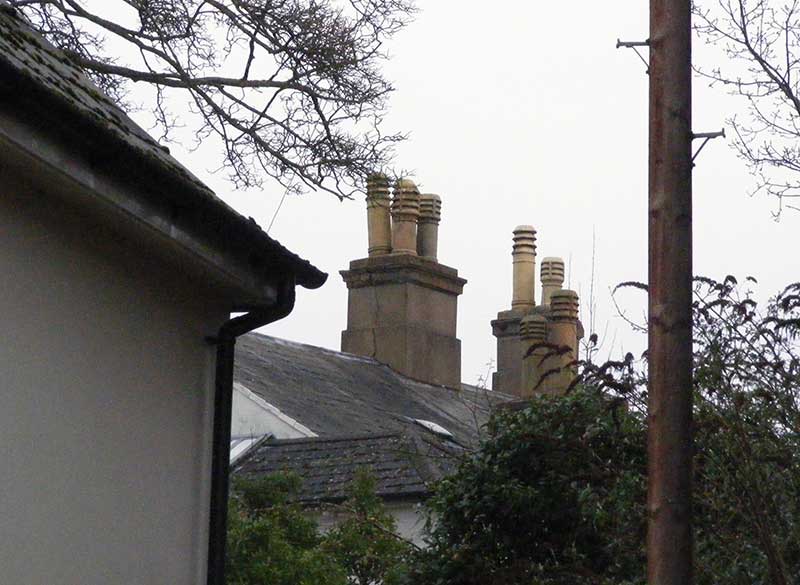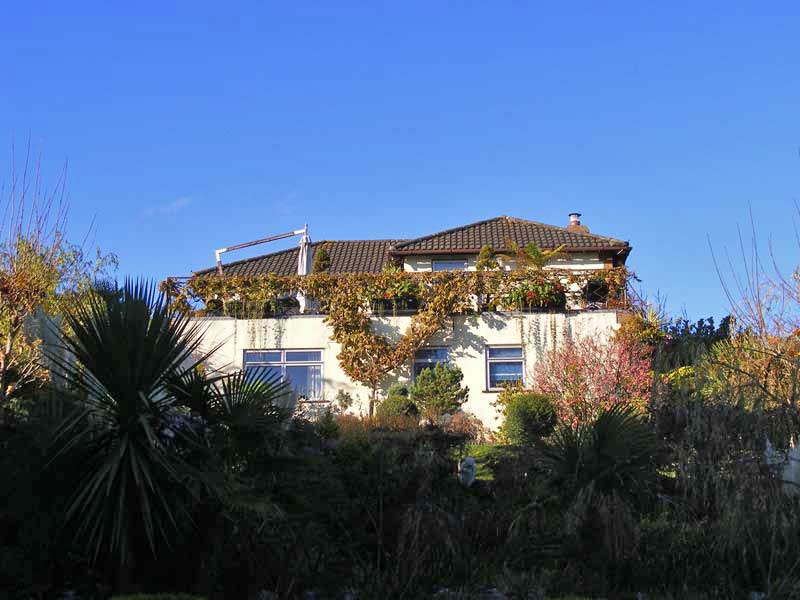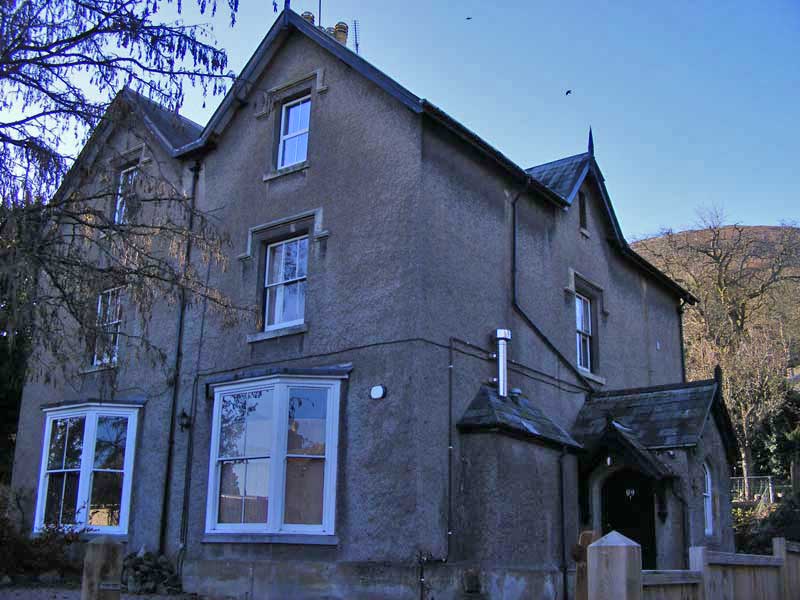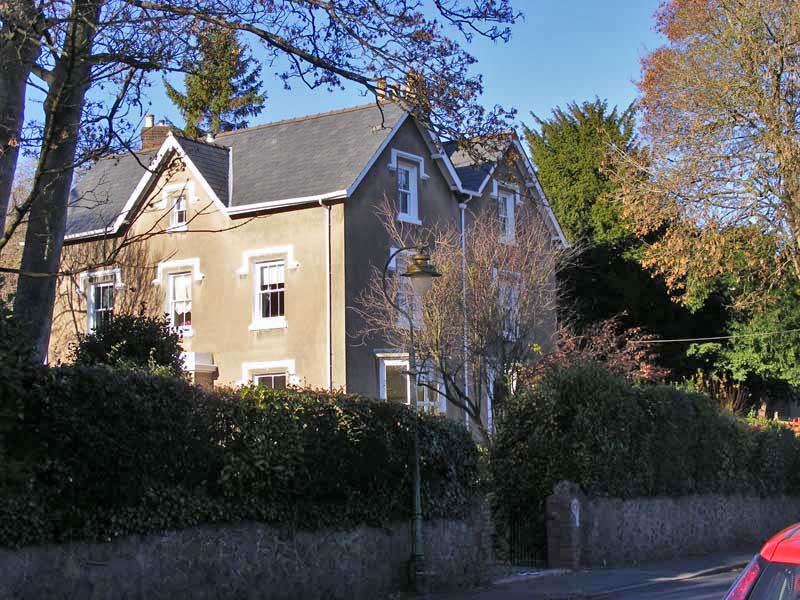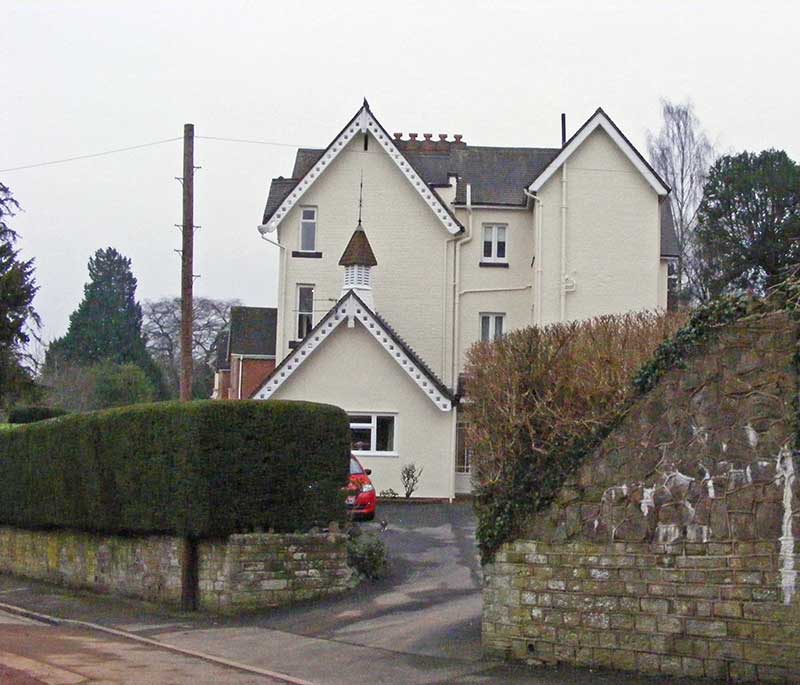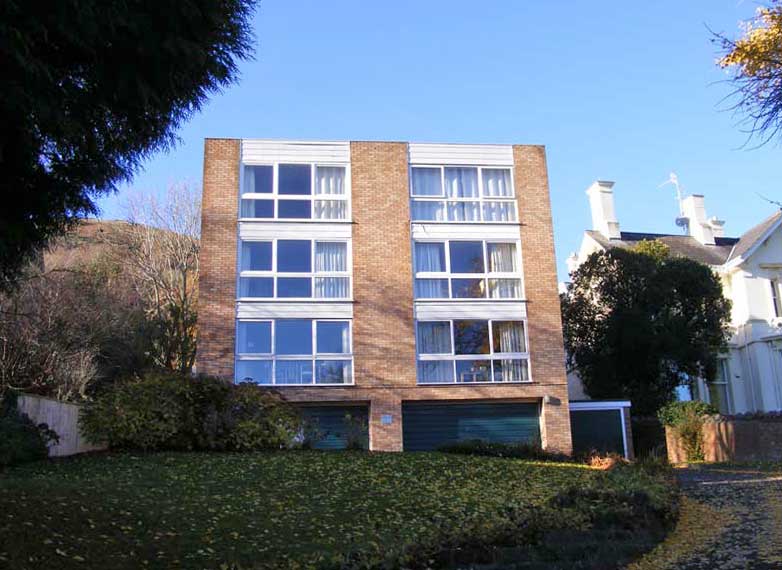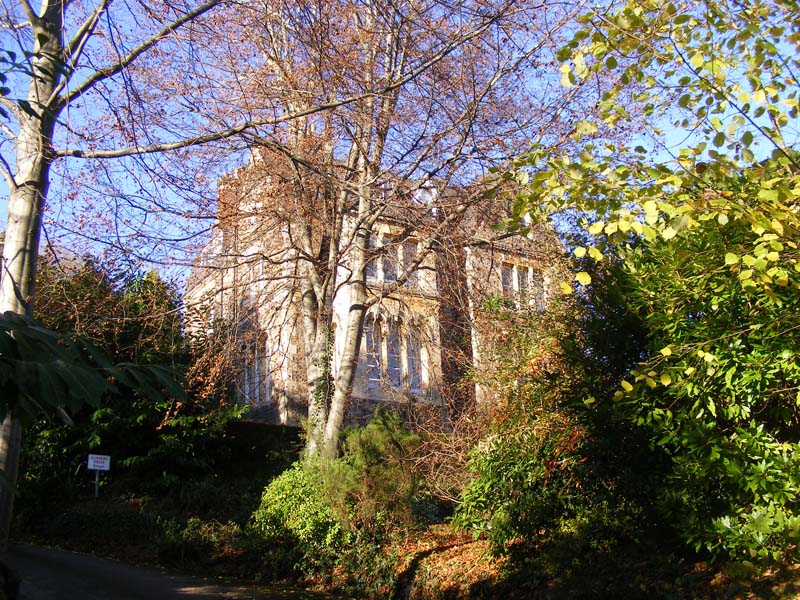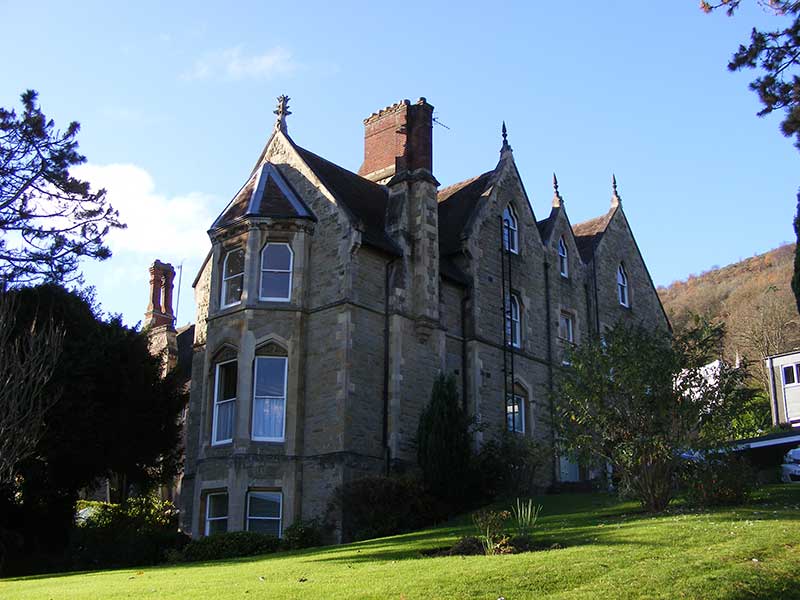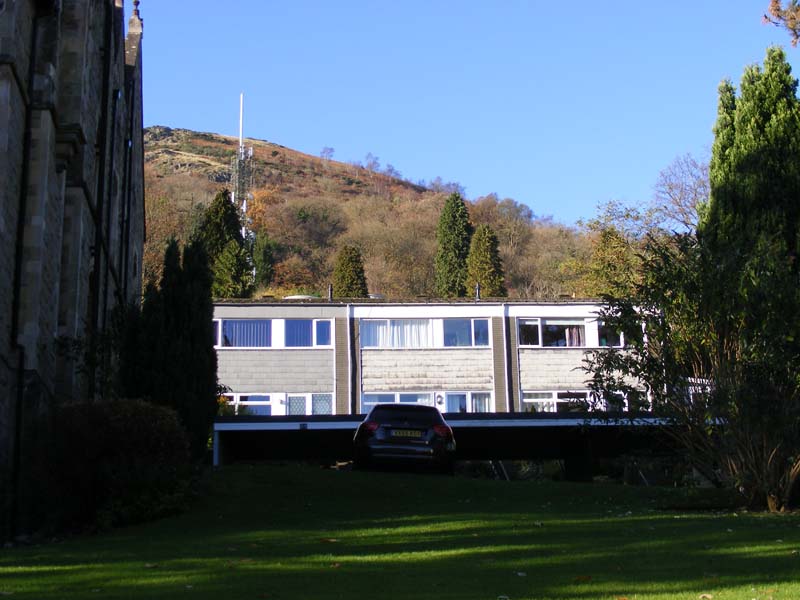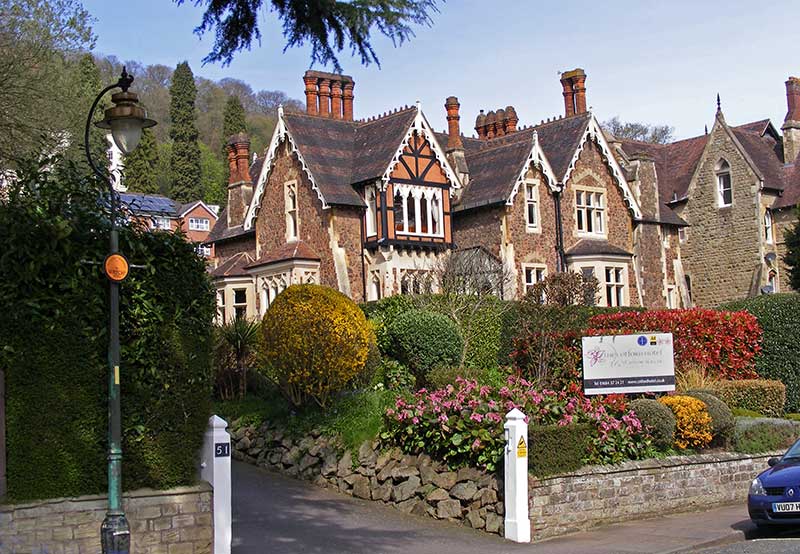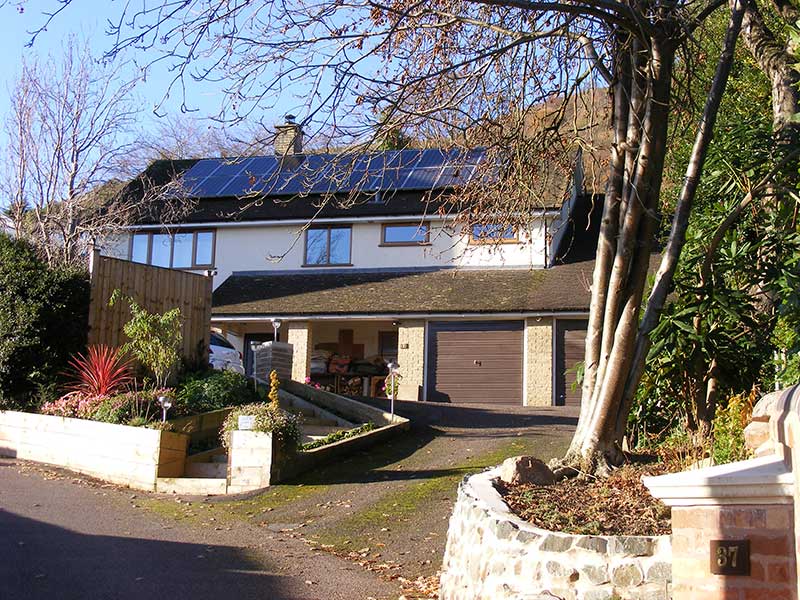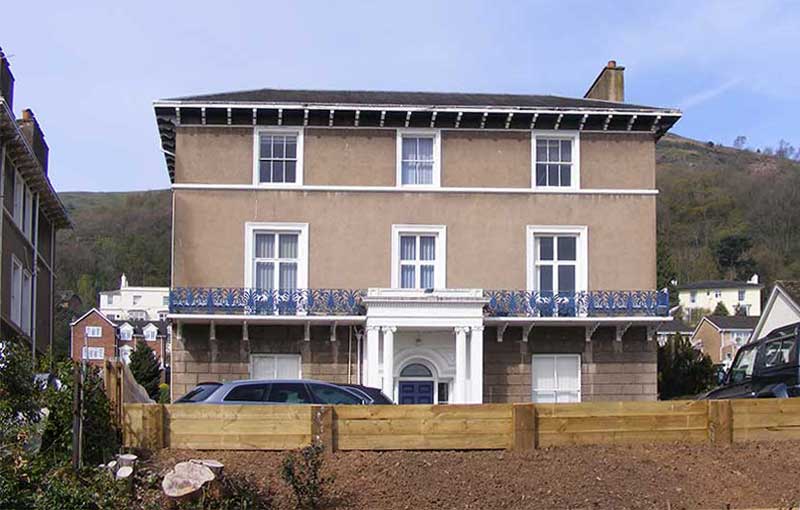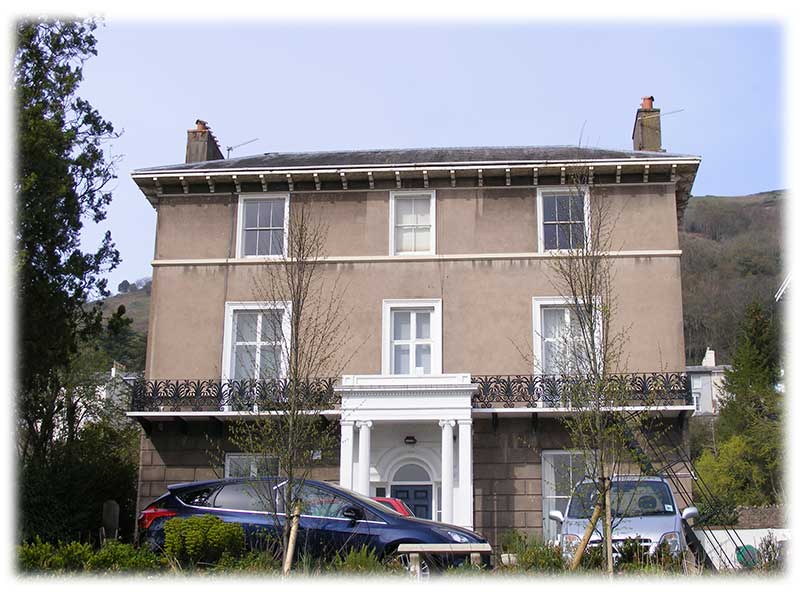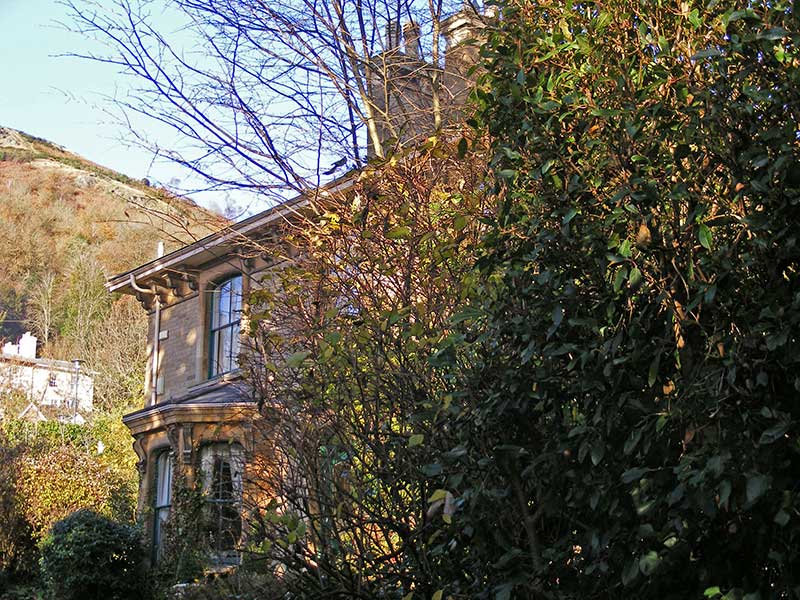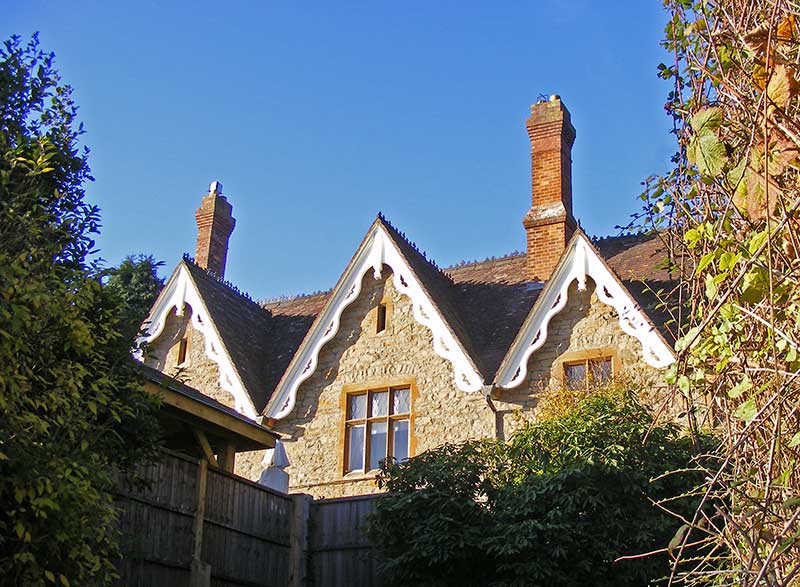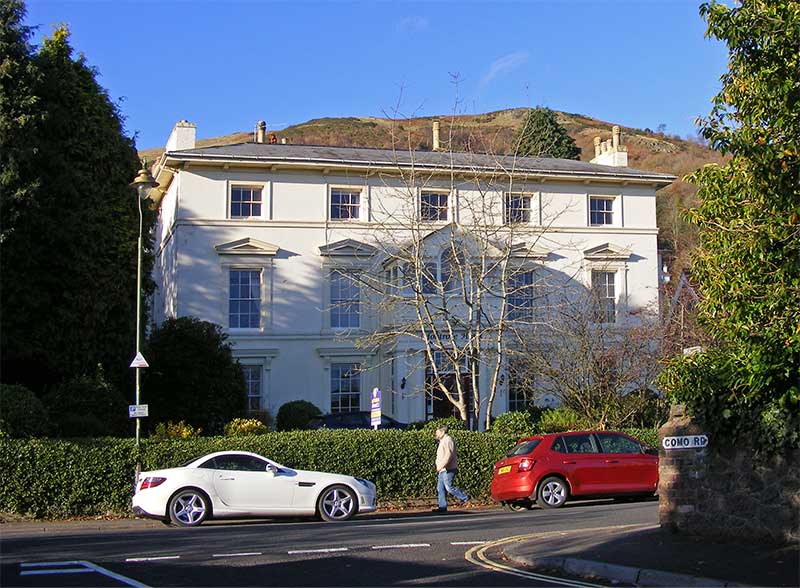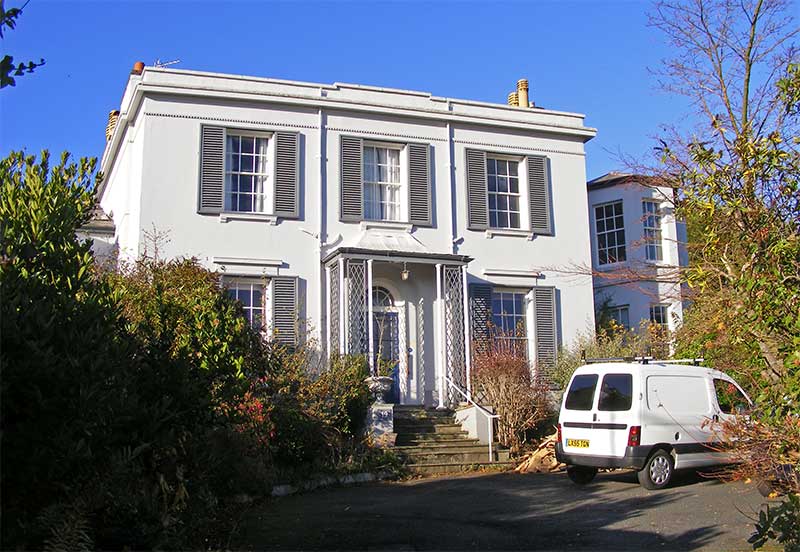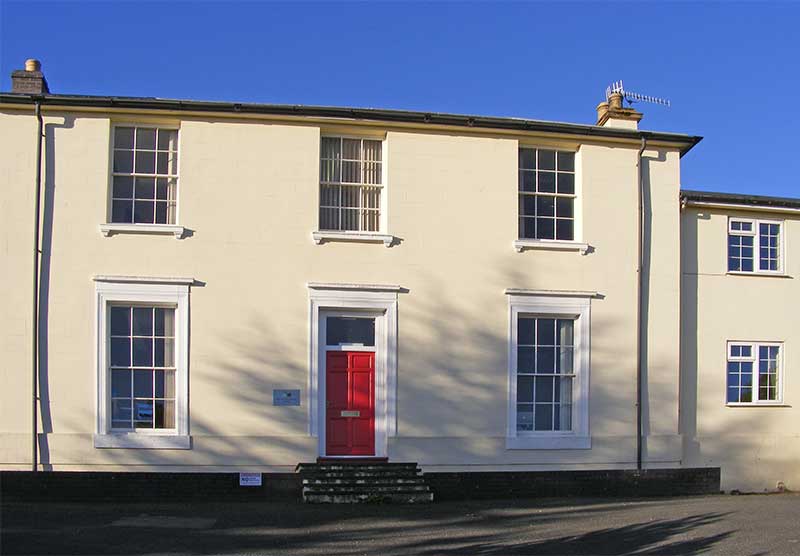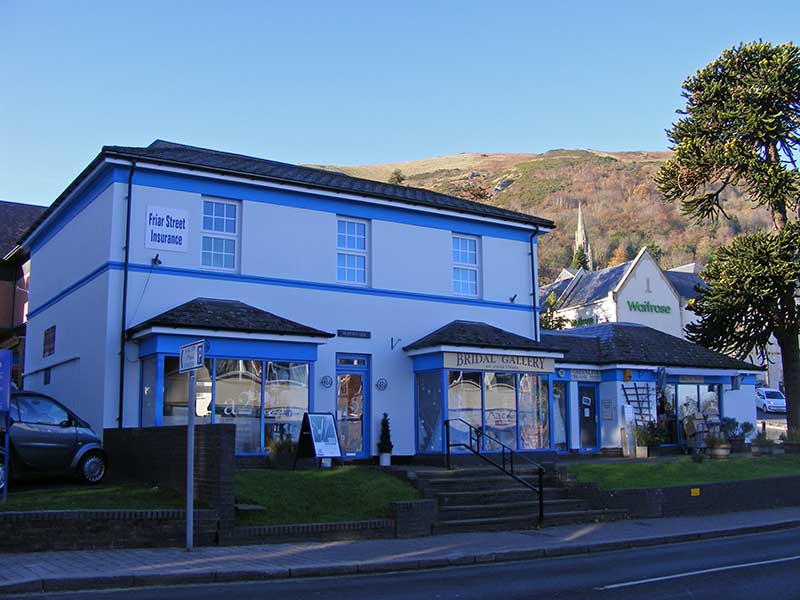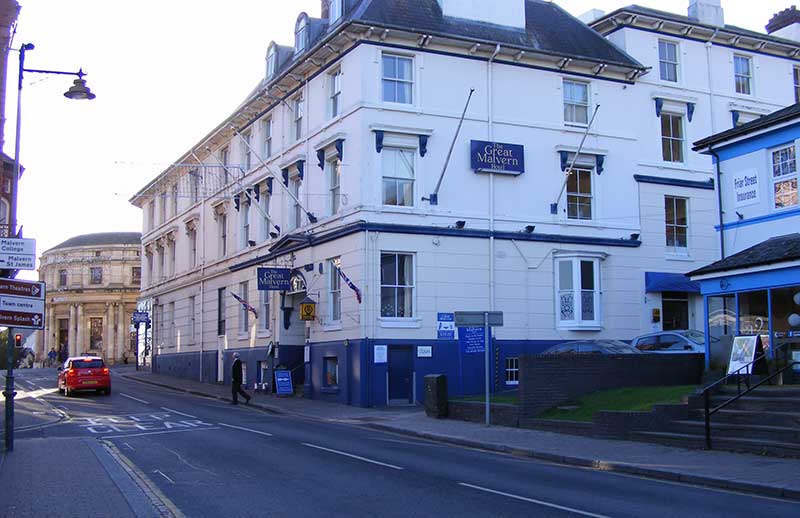
Angus and Rosemary's Miscellany
of Malvern - Local History
|
History menu > 2016 street directory of Graham Road, Great MalvernOverviewWe thought to write about the buildings in Graham Road, Malvern, which had been originally listed in Stevens' Directory of 1911, and decided to attempt this by creating a new illustrated directory, referring back to the older one. Graham Road was probably so named because Lady Foley (1805 - 1900) who inherited the land from her husband was born Emily Graham, daughter of James Graham, 3rd Duke of Montrose. The road had formerly been known as Graham Terrace which in 1842 extended little further than the Montrose Hotel. Malvern Museum relates that the northern end of Graham Road was developed circa 1851 when the unmarried daughters of Lt Col Dorville purchased land on which they had built a home for themselves, named Highcroft, and other properties to provide a rental income, viz Meadowbank facing onto Zetland Road, Fairlea and Laurel Garth on the west side of Graham Road, and on the east side, Dalvey Cottage, Hillthorpe Cottage and Mayfield Cottage. Graham Road now contains a mix of Regency Villas, large Victorian mansions, and relatively modern buildings. Back Lane below Waitrose was probably originally built to provide a rear access to the houses on the west side Graham Road and those fronting the Worcester Road. Some of the properties in Graham Road, such as the Montrose hotel, were built about 175 years ago and it's a credit to the builders that most are still standing while other buildings, such as city 'tower blocks' designed by trendy architects in the 1950s, are being demolished after only 50 years or so of service. The names of the properties in 1911 were not always the original names, and some of the names have changed since then; we have attempted to indicate name changes where possible, and mention some former residents. Since the houses were built, the Post Office has introduced a numbering system, but not all numbers in the sequence are allocated. Odd numbers are allocated to the west side of Graham road, starting at the junction with Church Street, and even numbers to the east side. Some properties now just show a house number. Our directory is not intended to be an up to date residential and business directory, but an attempt to indicate how the properties and occupants have changed over the years. Click to jump to return from Davenham along West side Properties in Graham Road in 2016(Right side from Church Street) The ExchangeThe Exchange building on the corner of Church Street and Graham Road was built about 1900, but we have not discovered exactly when. An 1884 map of Malvern shows Malvern Cottage and its garden had at one time occupied the site.
The Exchange Red brick with terracotta details, including first floor oriels; iron balconies. Status: unlisted but of interest. We wondered whether the first telephone exchange had been in 'The Exchange' building, on the corner of Graham Road and Church Street, as the 1911 Census people had first transcribed 'The Exchange' as Telephone Buildings, but we have found no evidence of that. The land was probably bought from the Foley estate, but so far we have not discovered either who developed it or who the owner is now; though we suspect the building is owned by a property company and the shops and flats leased. Estate agent Mark Ball no longer occupies the corner unit, and for much of 2016 the unit was vacant; when we came to Malvern in the 1970s it was Burston's TV and Radio shop. Residents remember there being a wet fish shop there before that, whose proprietor was known as Fishy Davis. In 1911 the shop had been owned by William Davis who was then living at The Oaks further down Graham Road. He had two sons one of whom became a surgeon, and the other head of BBC Radio Children's hour. Recent investigations by a group sponsored by Malvern Civic Society have uncovered the original tiling by Carter and Co of Poole, later Poole Pottery, showing fishing scenes. Click link to find out more In 1911 the occupants of The Exchange were listed by Stevens as: Tyte, WGA, hairdresser, etc Mate, JA, taylor and outfitter Morley, Edward, draper Blackburn, MD, dealer in antiques Haines, Miss B, sweet confectioner The Exchange now has a slightly scruffy appearance, and the shop units below in Graham Road mostly appear slightly 'tired' giving the impression they are not hugely profitable. In November 2016 the corner shop re-opened, after modernisation, as 'Rhubarb Home', numbered 105, with access on to Church Street.
Rhubarb offers a selection of elegant gifts, home accessories, clothing accessories, fragrances, pictures, cuddly toys, and jewellery; whether you are searching for something to give either as a wedding, birthday, or special occasion gift, or just self-indulging, they say there is something here for everyone. Number 2 Graham Road is a narrow doorway (see below) leading to an insurance broker and stockbroker offices; the sign above '3 the Exchange' may once have belonged to the fish shop next door.
Number 4 Graham Road, see above, is The Original Artwork Store, next to the Crusty Cob sandwich shop. Possibly the original shopfront. Bahoo, number 6-8 Graham Road, sells children's' shoes.
The knitting Parlour next door is closing down after several years trading. The last shop in the Exchange is a mens' hairdresser, which still has an illuminated barber's pole.
Crossing 'Broads Bank', we come to a block of modern shops with flats above, which occupy the site of Graham Works and Graham House. Graham Works (extinct)Broad, T, Ltd builders and contractors (1911) Graham House (extinct)Broad, Mrs Thomas (1911) The block of shops, possibly named St Andrews House, is currently occupied by: Holland Opticians, 16 Graham Road
Pizza Fiesta Take Away, 20 Graham Road Flute restaurant, 22 Graham Road Mackenzie's Diner, 24 Graham Road
When we first came to Malvern there were a fish and chip shop, and sports shop here. Edith LodgeRichards, Mrs Sarah Jane (Stevens' 1911) Edith Lodge, 36 Graham Road is a double fronted Victorian house, whose drive is immediately adjacent to the pelican crossing by the library.
Boundary of Edith Lodge opposite Edith Walk
Possibly the house and Edith Walk were named after the Foley family's home, Stoke Edith Park, in Herefordshire. Traffic along Edith Walk is one-way from HSBC on the Worcester road, but becomes two way, and near the bottom of the road, there is a turning to Waitrose (left of above picture). The Twinberrow sistersThe 1911 census confirms widow Sarah Jane Richards, nee Twinberrow, in residence at Edith Lodge, who was a farmer's daughter born at Madresfield about 1843. Living with her were her sister, widow Elizabeth Mary Cawley, her two orphaned grandchildren, a cook and a housemaid. Sarah Twinberrow had married Welsh doctor David Richards in 1861; the couple lived in Brighton, but by 1881 Sarah was back in Malvern living in Graham Road with her daughter, and widowed mother Sarah (senior), while her husband continued to live in Brighton with his widowed cousin Emma Snewins, until his death in 1897. Sadly Sarah Richard's only grandson 2nd Lt Reginald Paul Richards, 3rd Bn, attached to 1st Bn, Somerset Light Infantry died 9th August 1916 at number 10 Casualty Clearing Station in Belgium; his executor was his uncle Claude Metford Thompson D Sc, professor of chemistry at Cardiff University. Reginald had been a trainee solicitor, living at Edith Lodge, before the Great War, and was educated at Malvern College. Also in 1861, at Madresfield, Sarah's sister Eliza Mary Twinberrow, later known as Elizabeth, married attorney and solicitor William Wilkes Cawley (1834 - 1903). Eliza and William had no children and in 1871 were living in Malvern at Spa Villa. In 1881 she was at Graham Lodge in Graham Road not far from the Nag's Head, but we suspect William may have taken up with a mistress as in 1881 he was living at Foryd Cottage, Abergele, with Emmeline Grace Thomas, born British Guiana about 1857, by whom he had two sons:- Urqhart Cawley Thomas born Foryd, Abergele, 1879 and John Cawley Thomas born Oxton, Birkenhead 1881. Both sons were 'musical' and were educated at Bradfield College, a public school near Reading. Urquart may have gone on to New College Oxford (ref 3). Urqhart married Marjorie Myrtle Mead in 1904. He travelled regularly between England and New York from 1908 to 1910, being described as either a music teacher or organist, but mostly without his wife suggesting they may have chosen largely to lead separate lives. Marjorie Myrtle Mead was born in 1884, the daughter of Walter Mead, who was Master of Swaffham Workhouse in Norfolk, and Martha Elliss who was Matron of the Workhouse. Marjorie is listed on the 1939 Register as a Professor of Music, retired, of St Ronan's Lea, Brailes, Warwickshire. She died on 22nd April, 1973, at Buckland Brewer, Devon. Urquhart Cawley died in 1970 at Bideford, Devon, aged 90 years. We know little about John Cawley, but the Times on August 9th 1913 reported his marriage:
He may be the John Cawley who was assistant organist at St Albans Cathedral 1908 - 1909, and the organist boarding at 51 Kingston Road, New Malden in 1911. John Cawley died 30th March 1949 and is buried at Kingston Vale. John's mother, Elizabeth Mary Cawley, nee Twinberrow, died in 1926 at Edith Lodge. You will find her mother Sarah Twinberrow (1802 - 1890) buried in Madresfield churchyard. In more recent times Gerald Morice lived at Edith Lodge who, in 1979, published the booklet 'A Brief History of the Malvern Festival Theatre'.
Town Club (extinct)Burt GB, secretary (1911) Not found; possibly the building was in the grounds of the present library. Free LibraryMorgan, FC, librarian (1911) Holt, JH, caretaker (1911)
Great Malvern library Status: grade II listed (as is war memorial). Click for history of Great Malvern library
Springfield House (new)As you cross Como Road from the library, you will see a large building opposite on the corner of Graham Road and Como Road named Springfield House, which has its entrance in Como Road. This was probably built after 1949, and it has been suggested that the headmaster of Hillstone School once lived there.
Springfield House viewed from Como Road In recent times a large extension has been built on the east side and the property is now divided into apartments.
St Sidwell's (name extinct)In 1911 St Sidwell's was advertised to let by JG Lear and Son, Estate Agents, Church Street. St Sidwell's, possibly named after a district of Exeter, is now known as Springfield Lodge, number 52 Graham Road, which until 1992 may have been a boarding house for Hillstone prep school. Now apartments; in 2016 it had been enclosed by scaffolding undergoing renovation. The photos below show the building after the scaffolding was removed in 2017. The design of the pedestrian gate incorporates an owl which was the emblem of Hillstone prep school.
On an 1884 map of Great Malvern the property had been named Stone-house. The 1901 census records spinster Ellen Lowe, aged 95 years in residence at Stone-house, together with a cook, house maid, parlour maid, kitchen maid, lady's maid and a trained sick nurse. Ellen Pyndar Lowe (1806 - 1904) was the daughter of Rev Robert Lowe and Ellen Pyndar. Ellen Pyndar was the daughter of the Rector of Madresfield, Rev Reginald Pyndar, the younger brother of William Pyndar, otherwise Lygon, created 1st Earl Beauchamp of Madresfield Court in 1806. Ellen Lowe was first recorded at Stone-house in the 1861 census. The 1911 census recorded the property as uninhabited.
Springfield Lodge, 52 Graham Road, after renovation in 2017
Hillstone Mews and Hillstone HouseAn aerial photo of Malvern taken in the 1940s shows an undeveloped gap to the north of Springfield Lodge, now filled by two blocks of modern apartments named Hillstone Mews, 54-58 and Hillstone House, 64 Graham Road.
Hillstone Mews, 54 - 58 Graham Road
Hillstone House, 64 Graham Road These properties were likely built on land released when Hillstone school closed. Squirrels OakSquirrels Oak, 66 Graham Road, is a relatively modern brick house; later infill.
Squirrels Oak, 66 Graham Road The OaksDavis, Wm John (1911) The Oaks, 68 Graham Road, is one of a pair of white villas lying opposite Buckingham House dental surgery; pictured right in photo below. Status: grade II listed
Langland, 70, and The Oaks, 68 Graham Road The name of 'The Oaks' is painted on a glass panel above the front door. The 1901 census recorded glove manufacturer Edward Rigden, aged 28 years, in residence with his wife, a young child, house maid, cook and a nurse. By 1911 The Oaks had become the home of fishmonger and fruiterer William John Davis (1878 - 1930) whose shop was on the corner of Graham Road and Church Street at 3, The Exchange. In 1906 he had married Florence Kate Rachel Evans - they had 3 sons who were born in Malvern. William Eric the eldest became Head of BBC Radio Children's Hour and to many listeners he was Uncle David Davis. In the 1980s our children once listened to him telling stories at the Lyttleton Rooms. He died in 1996 and his obituary was published in the Independent newspaper. George Bertram Davis FRCS (1910 - 1942) became a surgeon. Sadly he died of Malaria in Rhodesia aged only 31 years. We think youngest son 'Henry Colin Davis' became a dentist. Their grandfather had been a fishmonger at 'Dogger Bank' in Church Street. The Hostel (name extinct)Sanatorium for Langland House School (1911) We suspect that when Councillor Alice Kate Farmer sold her ladies' school, Langland, on the opposite side of the road (now Clanmere) she moved to 'The Hostel' and renamed it Langland; that name was retained until at least 1962. On an 1884 map of Great Malvern this property is marked Hawthornes. In 1881 spinster Elizabeth Eppes Randolph was living at the house, where she died on 4th January 1890, aged 74 years. Her father was Rev Henry Jones Randolph (1778 - 1860) of Yate House, Gloucs; he had been chaplain to the Duke of Beaufort; vicar of Mareham in Berkshire and was formerly vicar of Hawkesbury in Gloucestershire. 1n 1901 the Hawthorns was occupied by James Boyce, a clerk to the District Council, together with his wife, three daughters, a son and an aunt. Today the house appears to have no name and is simply numbered 70 which appears as a faint frosted number in the pane of glass above the front door.
Langland, 70 Graham Road in 2016 Status: grade II listed
North of number 70, set slightly down the slope, is a brick detached property, modern infill.
Number 72, Graham Road
LongfleetWeller, Archibald H (1911) Next are two similar properties with facings of sandstone, probably built as a pair about 1904.
Longfleet, 76 Graham Road Early 20th century; detached house; Rock-faced Cradley(?) stone elevations, ashlar detailing, clay tiled roof, brick stacks (ref 2). The 1911 census confirms chartered accountant Archibald Henry Weller, aged 58 years, in residence at Longfleet with his wife, son and a servant. The house is recorded as having 8 rooms Longfleet, number 76, Graham Road, was offered for sale in 2016; the interior then looked dated and in need of modernisation, but the house is spacious and has a lovely art deco window on the south wall. St LawrenceHardy, Miss, apartments (1911) Number 78 approximates to a mirror image of Longfleet, except it has a rather tired looking porch and an interesting dormer window. No name was visible, but this might be the house named St Lawrence in 1911.
Number 78, possibly St Lawrence Early 20th century; detached house; Rock-faced Cradley(?) stone elevations, ashlar detailing, clay tiled roof, brick stacks (ref 2). The dormer window and features of the roof are shown in more detail in the photo below.
Dormer window of 78 Graham Road The rear or the property is of brick and not clad with stone; probably a cost saving measure. The 1911 census recorded spinster Sarah Elizabeth Hardy, aged 55 years, running an apartment house having 12 rooms and nine people in residence.
Graham CourtGraham Court, 80 Graham Road, is an imposing block of flats which looks as though it might have been of Victorian origin, but it has no chimneys and we think it was built about 1988. Our camera lens was not sufficiently wide angle to include the whole building!
Graham Court, 80 Graham Road Next in sequence in the 1911 street directory were two boarding houses named Springbank and Eastwick House. Our guess is that the first house reached, named 'Springbank Flats' is the original Springbank, and that the second block of flats, of modern construction, also named Springbank, replaced Eastwick House SpringbankGifford, Mrs Mary, apartments (1911) Gifford, George, gardener (1911) The 1901 and 1911 census record that Springbank was a lodging house and Mary Gifford was the lodging house keeper.
Springbank, 86 Graham Road Headmaster Lumley Fitzgerald Lyster started his boys' prep school here, about 1922, before moving to Hill House above the Worcester Road in 1934. Status: grade II listed Eastwick House (extinct)Morris, Miss, boarding house (1911) Probably demolished, as a modern block of flats now occupies this position. Possibly the colonnaded porch was retained from the old house.
Springbank, 86 Graham Road, possible site of Eastwick House One of two blocks of flats, both bearing the name Springbank.
StokefieldsPhillips, Mrs M (1911)
Stokefield, 98, Graham Road Status: grade II listed. A new block of apartments has been built next door, also named Stokefield and numbered 98 Graham Road. This was possibly built in the gardens of an an older property named Goodrest.
Stokefield, new block, 98 Graham Road GoodrestAfter Stokefield is a wide private drive leading down to 104 - 110 Graham Road; we hestitated to walk down and take photos but saw some properties are of Malvern stone, and some built of red brick. A 1927 map of Great Malvern shows that the drive led to a large property named Goodrest, which the census indicates dates back to early Victorian times.
Private drive leading to 104 - 110, earlier Goodrest The register of Malvern College records that in 1867 Arthur Gambier Kyrle Money was a pupil, whose mother lived at Goodrest. Arthur came from a distinguished family; he was the son of Rev Kyrle Ernle Aubrey Money (1812 - 1872) once Prebendary of Hereford Cathedral, and his second wife Mary Anne Smith (1825 - 1911). Arthur had many interesting relatives including Major General Sir James Kyrle Money, and Vice Admiral Roland Rowland Money. The 1871 census records Arthur's grandmother widow Mary Thomasina Money, aged 86 years, in residence at Goodrest with her unmarried daughter Vincentia, married daughter Mary Enle Grimston, and five servants. In 1881 Richard Price Hill was in residence, with his large family, described as a Solicitor, aged 54 years, farming 315 acres with freehold employing 6 men and 2 boys. He was still there in 1891 and died at Goodrest on 19th January 1898. He was buried at Astwood Cemetery, Worcester. The Worcester Daily Times, Saturday 22nd January 1898, has a report of his funeral. Richard's widow Lucy and their children were still at Goodrest in 1901; she died later that year and is buried with her daughter Florence Mortlock (who had died in childbirth) at St Peter's Cowleigh Bank; the graveside service at St Peter's followed a service at Holy Trinity. Lucy's funeral was reported in the Worcestershire Chronicle on Saturday October 5th 1901. Stevens street directory of 1911 records that the property was to let - apply JG Lear and Son, Estate Agents, Church Street. Later Rev Cyril Tidswell Holmes would live at Goodrest; after many appointments he became Chaplain to the Abbey School for girls, at Malvern Wells from 1913 to 1929 where he died in 1931. On the far side of the private drive is Avon House. Avon HouseAvon House, 112a Graham Road, is probably modern infill, in the garden of Brunswick House.
Avon House, 112a Graham Road Brunswick HouseClews, Mrs, apartments (1911) Clews, Charles (1911)
Brunswick House, 112 Graham Road This was once a nursing home. PembridgeSteynor, A and H, dental surgeons (1911); moved to Buckingham House. Until recently Pembridge, 114 Graham Road has been a guest house, with car parking off Albert Road North, but in 2017 planners approved change of use from a guest house to a private residence.
Pembridge, 114 Graham Road After Pembridge a junction is crossed forking to St James Road and Albert Road North. SeaforthFox, Archibald Douglas (1911) Seaforth, 116 Graham Road is a charming white house on the corner of Graham Road and St James Road.
Seaforth, 116 Graham Road Status: unlisted but of interest.
Church Meadow CourtChurch Meadow Court is a modern development providing sheltered one bedroom flats for rent by the elderly.
Next come a pair of white semi detached cottages with no name but numbered 128 and 130. Dalvey CottageBrodie, Mrs MJ (1911) This may now be 128, Graham Road, right of image below. Hillthorpe CottagePaley, Mrs Temple (1911) This may now be 130, Graham Road, left of image below.
Numbers 130 and 128 Graham Road Malvern Museum relates that Dalvey Cottage and Hillthorpe were built in the 1850s for the Dorville sisters who lived across the road at Highcroft, in order to provide a rental income. DordeneDordene, 138 Graham Road, is a modern property possibly divided into flats. No photo
Mayfield CottageVoid (1911) This may be the rather tired looking ivy clad cottage now known as number 142 Graham Road. Malvern Museum relates that Mayfield, possibly once known as La Casena, was one of a number of properties built in the 1850s for the Dorville sisters who lived across the road at Highcroft, in order to provide a rental income.
Mayfield Cottage, 142 Graham Road Status: unlisted but of interest.
DavenhamPerrins, Chas Wm Dyson. Nat Tel No 15 (1911) Once the home of Charles William Dyson Perrins a great friend and benefactor of Malvern. Click to read more about Davenham Davenham, 148 Graham Road, is now a care home run by Friends of the Elderly. The house is down a drive mostly hidden from the road.
Davenham Built1859, expanded in 20th century; Loire-style c.1900/02 & 1904/05; Malvern stone, ashlar detailing, ashlar stacks, gabled slated roof (ref 2).
Davenham LodgeSmith, Fred Hy, house carpenter (1911)
Davenham Lodge at the entrance to Davenham Status: grade II listed. RETURN (houses on the west side of Graham Road)
Ivy CottageIvy Cottage 113 Graham Road lies on the common north of the Nag's Head pub. Probably outbuildings of Ivy House, converted into holiday accommodation.
Ivy Cottage Ivy HouseBird, George (1911) Ivy House, 111 Graham Road Ivy House is an ancient property, built of brick, approached by a track across the common opposite the Nag's Head pub.
Ivy House Barry Sharples' Miscellany Website records that Stephen Ballard (1804 - 1890), who was the engineer responsible for completing the railway tunnel through the Malvern Hills, and was a founder of the Malvern Hills Conservators, was born at Ivy House on 5th April 1804. He married Maria Bird in 1852 and they set up home at The Winnings in Colwall. Stephen's niece Charlotte Ballard (1838 - 1920) and her husband, farmer George Morton Bird (1834 - 1914), were living at Ivy House in 1911.
Allsep, FJ, livery stables (extinct)
We don't know exactly where the stables were, but we wondered if Allsopp rented the coach house of Highcroft on the corner of Graham Road and Moorlands Road where Moorlands Court stands now. 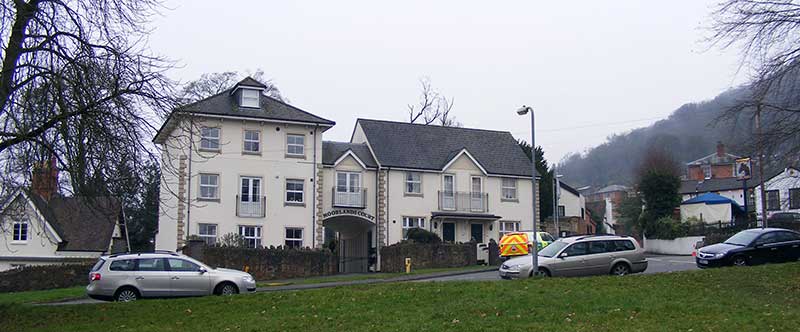
Moorlands Court The 1911 census recorded Frederick's wife Mary Ellen Allsop, living next door to the stables at Graham Lodge, where she was described as a cab proprietress. Graham LodgeAllsep, FJ (1911) Graham Lodge, now 107 Graham Road, is a pretty white cottage, opposite the entrance to Davenham and adjacent to the junction of Graham Road with Bank Street.
Graham Lodge, 107 Graham Road Status: unlisted but of interest.
High CroftGorham, Rev Hy S (1911) High Croft, otherwise Highcroft, 101 Graham Road, is a large white villa, now apartments, set high above Graham Road, behind trees, with vehicular access from a narrow shared gravel drive, next to Moorlands Court, off Bank Street. A small gate, set in the wall, provides pedestrian access from Graham Road, up steep steps. Set into the pillar of the gate, is the name Highcroft.
Malvern Museum relates that Highcroft was built in 1851 by Lady Foley's land agent, builder George McCann, for two daughters of Lt Col Philip Dorville (ref 4, 5), Companion of the Order of the Bath, who fought at the Battle of Waterloo. These were spinsters Jessie Louisa Dorville (1806 - 1860) and Maryanne Dewar Dorville (1803 - 1862) who are buried in the churchyard of St Matthias Malvern Link. Maryanne had died at Inverness in Scotland. The cost of building Highcroft was £1,694. These details about Lt Col Philip Dorville are gathered from other websites:
Sketch of Highcroft The staircases and a small extension at the front are later additions.
He is buried in Great Malvern cemetery (see photo left) and there is in Holy Trinity Church a memorial window, donated by his widow. The inscription at the base of his memorial reads: In loving memory of John William Dorville, Admiral Royal Navy, died June 24th 1894, aged 79 years. So he bringest them unto the haven where they would be, Psalm CVII 30 Click to read his story on the Holy Trinity website Admiral Dorville seems to have played a prominent part in town affairs. He had been a town commissioner under Dr Gully, chaired the Malvern Dispensary, was chairman of the town club and presented prizes at Malvern College. When Admiral Dorville died, Highcroft passed to his 'cousin' Elizabeth's daughter, Clara Dorville Morton, who had married Rev Henry Stephen Gorham in 1866; according to ref 5, Highcroft remained in the family until the 1950s. Nowadays, little can be seen of the house from the entrance in Bank Street except chimneys, and the worn name Highcroft on the right hand gate pillar.
Highcroft chimney stacks, glimpsed from Bank Street The Times newspaper had reported on 5th October 1820 that Admiral Dorville's father also James William had died of 'apoplexy' at Levant Lodge Worcestershire aged only 29 years; probably he died of what we would nowadays call a 'stroke'. So it would have fallen upon the Admiral's mother, Martha, to bring up her young family alone. The Admiral had a younger brother Thomas Edward Dorville born Christmas Day 1817 who was educated at Worcester College Oxford and became a clergyman; Thomas served as a curate at St Andrews, Jevingham, a small rural parish near Eastbourne. Sadly he died in Kent in 1859 in his 41st year. Admiral Dorville's sister Martha (1813 - 1903) married Joseph Henry Rolls (1806 -1878) at Ryde on the Isle of Wight in 1837; the 1871 census described him as a Justice of the Peace, and Retired Customs Officer. The three Dorville siblings had no children and so that branch of the family became extinct. Their widowed mother Martha died at Cheltenham in 1870. In 2015 descendants of the family gifted a treasure of records of the family and the house to Malvern Museum. From these Ann Backhouse and Faith Renger crafted an excellent illustrated talk, presented on 6th April 2018, about the history of Highcroft, 1851 to 1952, which provided an opportunity to see some of the impressive collection of paintings, music, documents, and photographs etc. New HouseModern infill, probably built in the large garden which lay on the south side of Highcroft. Yes it really is named 'New House'. The crane in the photo below might be a support for a sun canopy.
New House, 97 Graham Road
Laurel GarthHinckley, Miss Amelia (1911) We think the property is now numbered 89 Graham Road, and divided into flats. Originally built for the Dorville sisters at Highcroft in the 1850s.
Laurel Garth, now 89 Graham Road
FairleaFitton, Mrs (1911) Fairlea, 83 Graham Road, is similar in appearance to Laurel Garth. Both properties were built in the 1850s for the Dorville sisters at Highcroft, to provide a rental income, as was Meadow Bank in Zetland Road.
Fairlea, 83 Graham Road In 1911 Fairlea was the home of Harriet Margaret Fitton, nee Gregory, the widow of Edward Brown Fitton (1825 - 1910), Barrister and Inspector of Factories. Their only son professional soldier Brigadier General Hugh Gregory Fitton, Officer Commanding, 101st Infantry Brigade, 34th Division, BEF was killed in 1916 and you will find his story on the Malvern Remembers website. Elgar's Sixth Enigma variation, Ysobel, is said to be in memory of Hugh's sister Isobel Fitton, who was a friend and amateur viola player; she is buried in Great Malvern cemetery
CharlecoteTwynam, Col Edmund Lemoyne (1911) Charlecote is a white villa bordered by Graham Road, Zetland Road and Back Lane. Vehicular access is now from Zetland Road, and a modern development, Charlecote Mews, of red brick construction has been built in the grounds, on the corner of Graham Rd.
Charlecote House Former resident, Edmund John Lemoyne Twynam (1831 - 1912) is buried in Great Malvern cemetery. Others relate he had been a Colonel, 25th Native Bengal Infantry and Bengal Staff Corps. Born Ceylon, son of Thomas Holloway Twynam (1794-1869) and Mary Cecilia, nee Summerfield, (1796-1853). Married and then divorced Charlotte Warner Law. Lived for many years at 'Charlecote', Graham Road, Malvern. A Malvern JP and one-time director of the Birmingham and Aston Tramways Company. While we were in Zetland Road, a resident told us that Charlecote was last occupied by a dentist and that, when he died, the property was converted into flats. In Gaelic, the name Zetland refers to Shetland, a strange name for a road in Malvern but possibly named after the second Earl of Zetland who was a Freemason and MP.
InglewoodSalt, Henry, MD, FCS, FRCS (1911) Inglewood, 79 Graham Road stands above Graham Road hidden by trees. No photo of frontage, but glimpses of this and other houses on the west side of Graham Road can be glimpsed from Back Lane.
Taynuilt (name extinct)Jeakes, John William. To let - Apply JB Harper and Sons, Estate Agents, Worcester Road (Stevens directory, 1911) Taynuilt is now named Elgin House, 75 Graham Road, which stands above Graham Road mostly hidden by trees. A glimpse can be seen in the photo below and on our page about Back Lane. The house was likely named after a place an owner had visited while on holiday in Scotland. Circa 1911 Tanuilt was the home of John William Jeakes (1853 - 1934) who appears largely to have lived off an inheritance from his father, engineer, John William Jeakes senior (1817 - 1874) of Winchester Hall, near Highgate (demolished). His uncle, Rev James Jeakes, was a clergyman. John William Jeakes senior and his father, ironmonger William Jeakes (1783 - 1850), had build a successful family business with premises in Great Russell Street, Bloomsbury, supplying kitchen and larder equipment, such as cookers and hotplates, to Country Houses. The Jeakes family is said to have supplied Charles Dickens, Florence Nightingale, and the House of Lords' kitchen; central heating equipment was also supplied to the House of Commons. Upon his father's death, Jeakes sold the business to a friend, Edward Clements, and it became known as Clements Jeakes and Company, which continued to trade until about 1927. John William Jeakes and his wife Clara are buried in Great Malvern cemetery. Their only son, who fought at the 3rd battle of Ypres, was a casualty of the Great War; a list of Cambridge graduates records:
At the time of his death, JW Jeakes junior was aged 36 years. Very sadly his mother Clara died only a few weeks later on 30th December 1917. The story of John William Jeakes junior can be found on the Malvern Remembers website. He is listed on the Roll of the Fallen at Malvern library, and his name is said to be on the Holy Trinity war memorial. Granta CourtGranta Court, 73 Graham Road is a modern block of flats.
Granta Court, 73 Graham Road and corner of Elgin House Granta LodgeGreaves, Henry (1911) Granta Lodge 71, Graham Road, was built about 1868, and now seems to be occupied by businesses.
Granta Lodge, 71 Graham Road Built 1868, 4 storey, detached. Malvern stone, ashlar detailing, gabled roof with patterned clay tiles. Now commercial offices (ref 2). On page 15 of the Civic Society annual report of 2012, Katharine Barber wrote about the history of Granta Lodge. Past residents were said to be:
More about Colonel William Daniel Conner who retired to Granta Lodge. Born Ireland in 1854. Colonel of the Royal Engineers. Entered Royal Military Academy, Woolwich in 1871, and the Corps of Royal Engineers in 1873. Retired 1904. Served in India, Burma, Malta, Cyprus and Canada. Afghan war 1879. ADC to the Governor of Bengal 1883 - 1885. Instructor and Professor of Fortification, Royal Military Academy, Woolwich, 1889 - 1899. Commanding Royal Engineers, Canada 1901-1904. BeaconsfieldTo let - Apply JB Harper and Sons, Estate Agents, Worcester Road; or JG Lear and Son Estate Agents, Church Street (1911)
Beaconsfield, 69 Graham Road Late 19th century. 3 storeys, detached; dressed sandstone; Bath stone ashlar detailing, hipped slated roof, brick stacks (ref 2).
Barsham HouseMills, Mrs Caroline (1911) The 1901 census records widow Caroline Mills, aged 60 years, in residence together with a cook, parlour maid, house maid, and a nurse. We think Barsham House, 65 - 67 Graham Road still exists, but it is hidden by a laurel hedge and approached from an unmarked entrance next to Kensington House. No photo, but rear can be glimpsed from Back Lane. Status: unlisted but of interest.
St Dunstan's (name extinct)To let - apply JG Lear and Son, Estate Agents, Church Street (1911) Saint Dunstan had been Bishop of Worcester and Archbishop of Canterbury, which suggests someone with religious leanings had once lived at the house. We think St Dunstans has been renamed Kensington House, 53 - 59 Graham Road.
Kensington House, Graham Road Late 19th century; Gothic, detached; pinch-faced Cradley stone elevations; limestone ashlar detailing; gabled clay tiled roof; plain brick stacks (ref 2). The 1901 census records glove manufacturer Samuel John Urwick, a widower, aged 72 years, in residence, together with two daughters, a grand-daughter, cook, parlour maid and kitchen maid. He was a partner in the firm Fownes Brothers of Worcester; father of Sir Henry Urwick JP, and grandfather of management consultant Lt Col Lyndall Fownes Urwick. The Edinburgh Gazette, May 9th 1933, referred to the bankruptcy of Edna Lulu Goodwin (1888 - 1947) residing and carrying on business at St Dunstans, Graham Road, Malvern, in the county of Worcester, who was a boarding house proprietress, formerly residing at Woodland Lodge, Worcester Road, Malvern. At the rear of the garden can be seen a block of three modern flats, with a flat roof, starkly contrasting with the Victorian houses either side.
Flats adjacent to Kensington House
Littleford Lodge (name extinct)Guy, Mrs JW (1911) Littleford Lodge was built about 1851. It is now named The Cotford Hotel, 51 Graham Road. An imposing residence with tall chimneys, pierced bargeboards and a coach house at the rear. Wine merchant and hotelier Edward Archer once lived here. Click to read about Archer family
The Cotford Hotel, 51 Graham Road Malvern stone, ashlar detailing, clay tiled roof, Decorated-style details, pierced bargeboards, timber-framed gable (ref 2).
The property was still known as Littleford Lodge in 1901 when the census recorded widow Eliza Waters, aged 82 years, in residence, with her daughter Elsie, a parlour maid, house maid and two nurses. Status: unlisted but of interest. The Rockery (name extinct)To let - apply JG Lear and Son, Estate Agents, Church Street (1911) In 1901 spinster Margaret Harvey, aged 36 years, born Brighton Sussex, had been living at the Rockery together with a cook, parlour maid, and a kitchen maid. The Rockery is now named Cedar Lodge, 45 Graham Road, which lies next to Buckingham House and is screened from the road by trees and shrubbery. It may once also have been named Shirley Lodge. No photo, but rear can be glimpsed from Back Lane. Late 19th century, stone (ref 2). Status: unlisted but of interest. Villiers CourtVilliers Court, 37 Graham Road is a new home sharing a drive with Buckingham House.
Villiers Court, 37 Graham Road
Buckingham HouseIzard, Miss Emma, apartments (1911) Buckingham House, 35 Graham Road has since about 1918 been a dental surgery, and is illustrated in a drawing dated 1856.
Buckingham House, 35 Graham Road Status: grade II listed.
Langland House (name extinct)Over the years, this property has been named Lambert House, Fairholme, Langland and lately Clanmere. It and Buckingham House next door were almost certainly built as a pair, on or before 1856. In 1911 it was a ladies' school named Langland run by Alice Kate Farmer and Eva Leather. The 1901 census reveals that the property had been earlier named Fairholme; it was then unoccupied, and it seems likely the house was next acquired by Alice Farmer for her school. By 1917, after the school closed, Langland had become Fairholme nursing home, later Clanmere Care Home. On an 1884 map of Great Malvern the property is marked Lambert House. Lately the name 'Lambert House' appears to have been given to an imposing property, at 9 St James Road, which lies off Graham Road on the boundary of Davenham. It was once the home of teacher Mary Dixey and her mother Evelyn who were related to the Dyson Perrins family; their house had earlier been named 'Dawn'. In recent years the building now known as Clanmere, 33 Graham Road, has been used for business purposes and several companies have been registered to this address. Current status unknown, but possibly apartments.
Clanmere, 33 Graham Road Status: grade II listed. It is of note that Reginald Radcliffe Cory had been born at Lambert House on 31st October 1871. Reginald became a respected horticulturalist in the Edwardian era and was instrumental in the revival of the Dahlia and the establishment of the Royal Horticultural Society in the UK. He was the son of millionaire John Cory, whose family had made their money shipping coal from South Wales, and Anna Maria Beynon the daughter of a colliery proprietor. At the time of the 1871 census many people were living at Lambert House including William Speed Barrister at Law, but not the Corys, so we assume his family may have been visiting Malvern for a holiday and the water cure when Reginald was born. Please do tell us if you know of any other connection to Malvern.
BelfordLord, Miss E (1911) The name Belford, 29 Graham Road, is set into the boundary wall, but most of the house is hidden by trees and shrubbery.
Belford, 29 Graham Road Late 19th century, Italianate villa type, snecked stone (ref 2) Status: unlisted but of interest.
UplandsBolding, Miss MB (1911) The 1911 census confirms spinster Mary Beatrice Bolding born Birmingham about 1868 was in residence with a cook and a parlourmaid; the property was recorded as having 10 rooms. She was the daughter of banker George Frederick Bolding who had died in 1900. Her brother John Frederick Bolding was a partner in the business Thomas Haddon and Co which manufactured rivets and screws in Birmingham. In 1901 Francis Anderson, aged 51 years, was in residence with his wife, two daughters and three servants. The census records that he was born in India and had retired from the Indian Civil Service. Uplands, 25 Graham Road, recognised by three gables, was built about 1854. On an 1884 map of Malvern it is marked 'Yarnton Lodge'.
Uplands, 25 Graham Road Uplands is one of the oldest houses in Graham Road. A stone plaque at the rear of the property bears the initials WCW 1854, and we think it may have been built in 1854 for Physician and Surgeon William Corner West (1810 - 1884). William Corner West is buried in Great Malvern cemetery not far from the Lambert memorial:-
The Royal College of Surgeons website records that:
The Lying-in Charity would have provided assistance to poor expectant mothers and in those days the Rural Hospital may have been in Hospital Bank off Newtown Road. Part of Uplands is now known as The Lodge. Status: grade II listed.
Montrose Boarding EstablishmentGatward, Thomas, proprietor (1911) The property shown was until recently the Montrose Hotel, 23 Graham Road, built about 1842, and probably named after the Lady Emily Foley's father, the Duke of Montrose.
The Montrose Hotel, 23 Graham Road Status: grade II listed. The property was sold in 2017, and was undergoing extensive renovation in January 2018, with a view to becoming a grand private residence, with the annex retained as holiday accommodation. It's a shame that tourist accommodation will be lost at both Pembridge and the Montrose in the centre of town. Underneath the thick rendering, chiselled off during renovation, it can be seen the building is of brick construction.
Allan Bank (name extinct)Thorpe Mrs S (1911) One of a pair of villas which appear on an 1884 map of Malvern. Now named Repton House, 19 Graham Road.
Repton House, 19 Graham Road In 1901 Allan Bank had been occupied by John Everal, a retired builder. Status: grade II listed.
Graham Lea (name extinct)Broad, Charles C (1911) Allan Bank is linked to Graham Lea which in 1884 was named Graham Villa. Ignoring cosmetic features, both houses look to be built to the same design. The house, lying adjacent to the footpath up to Waitrose, is now simply numbered 17 and currently occupied by a consultancy, the Geo Environmental Group.
Number 17 Graham Road Status: unlisted but of interest
MorningsideDavis, Herbert Henry (1911) Morningside, 11 Graham Road is a villa built about 1904 adjoining the car park of the Great Malvern hotel, on the south side of Edith Walk. One half of the property is currently occupied by an insurance broker, and the other by a bridal gallery. Green Link organic foods occupies a single storey extension.
Morningside, 11 Graham Road The census records that in 1901 Morningside was a lodging house.
Beauchamp Hotel (name extinct)Chapple, Charles (1911) The Beauchamp hotel, built about 1842, stood on the corner of Graham Road and Church Street, next to the traffic lights. Part became Kendall's department store, and now occupied by the Halifax building society. The larger remaining part is still a hotel, now named 'The Great Malvern'.
Great Malvern Hotel, Graham Road Built circa 1845, stuccoed with tripartite corner window; enlarged by Elmslie, Franey and Haddon, 1865, and again by GC Haddon, 1883 Click link for Great Malvern Hotel website More glimpses of some of the houses on the western side of Graham Road can be found on our page A Stroll down Back Lane References
If you are able to provide either corrections, old photos, or additional information, please get in touch by contacting the webmaster |
|
Last updated 2nd February 2024 |
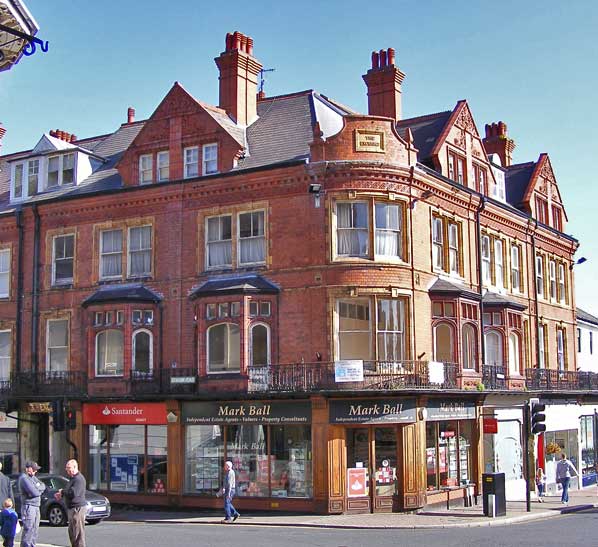
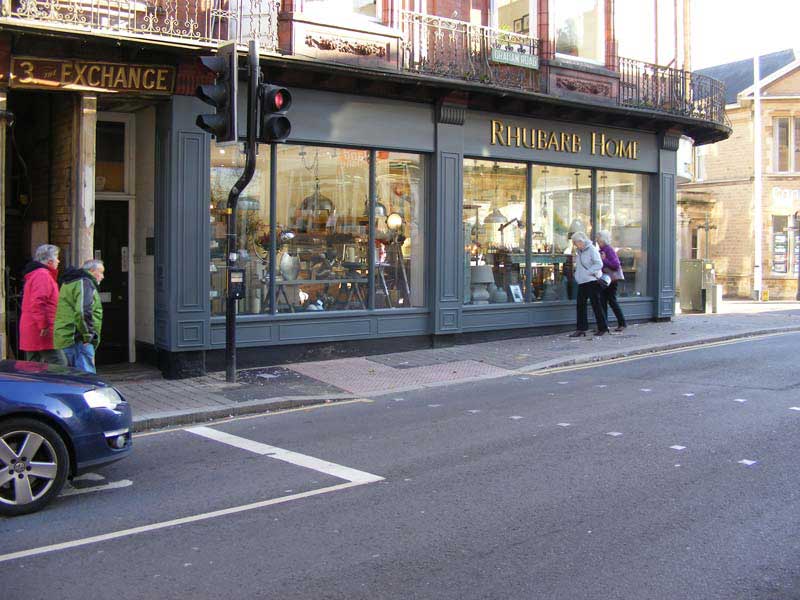
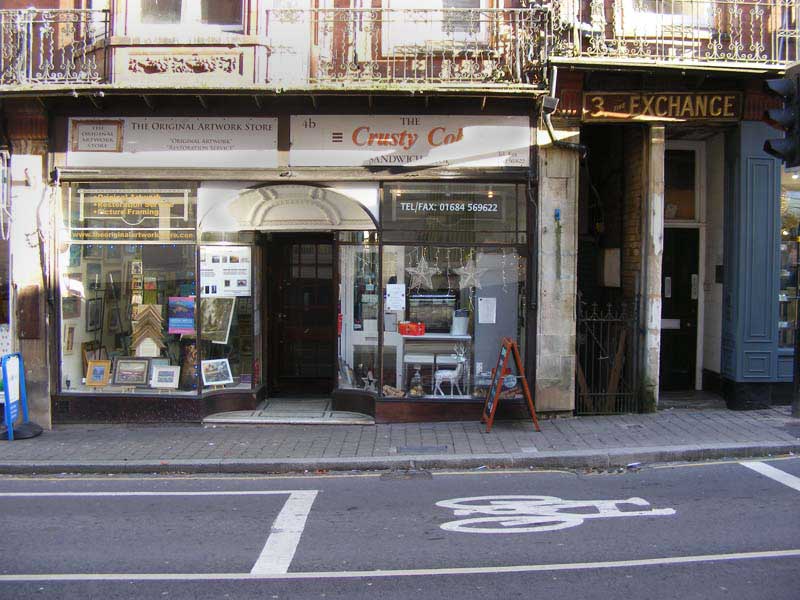
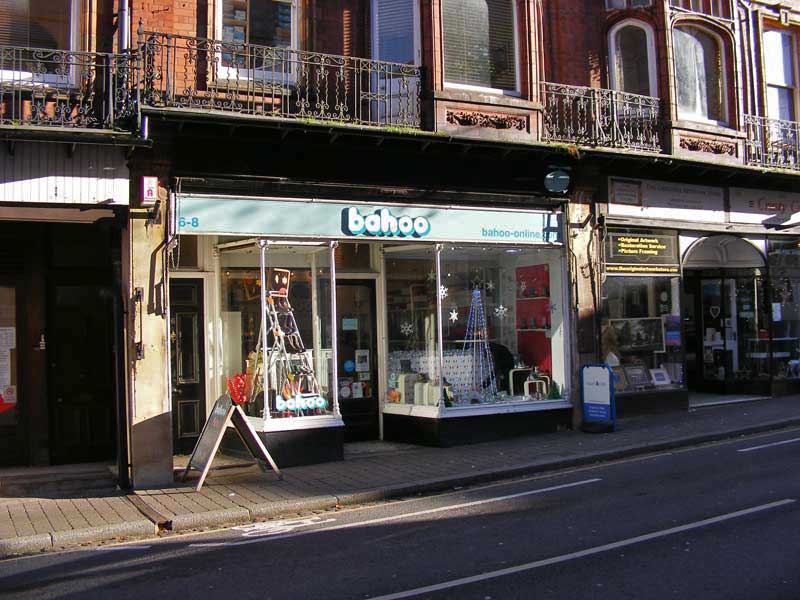
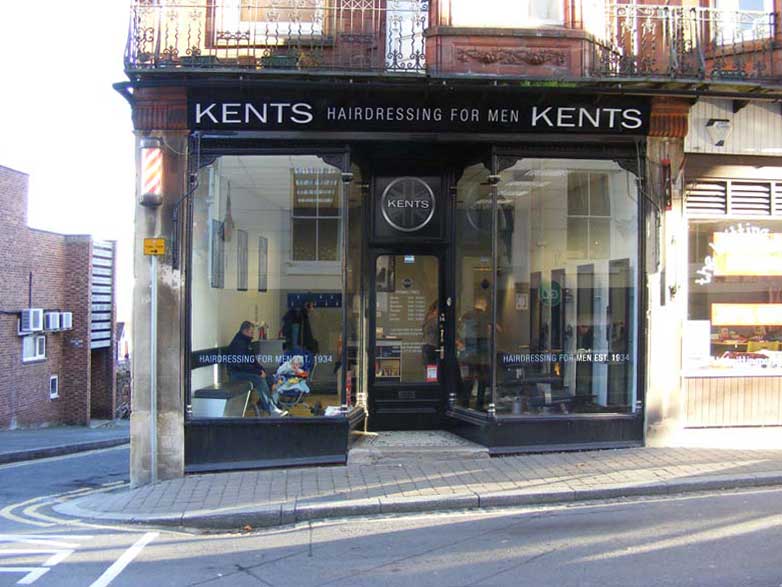
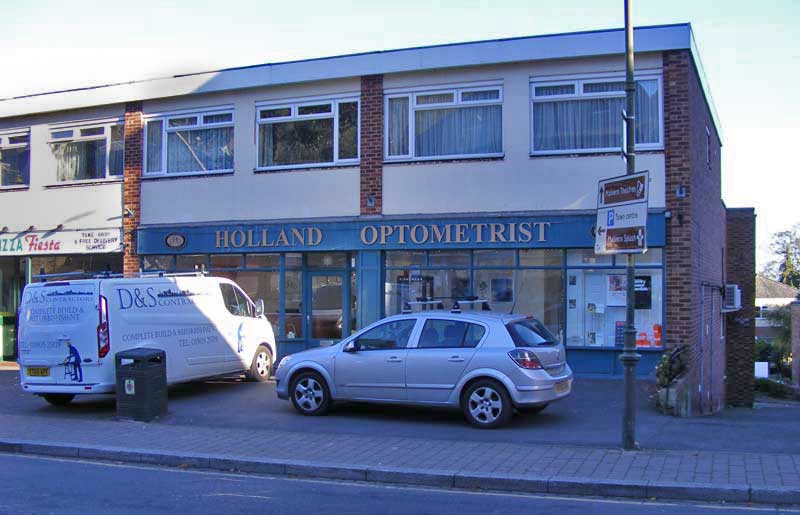
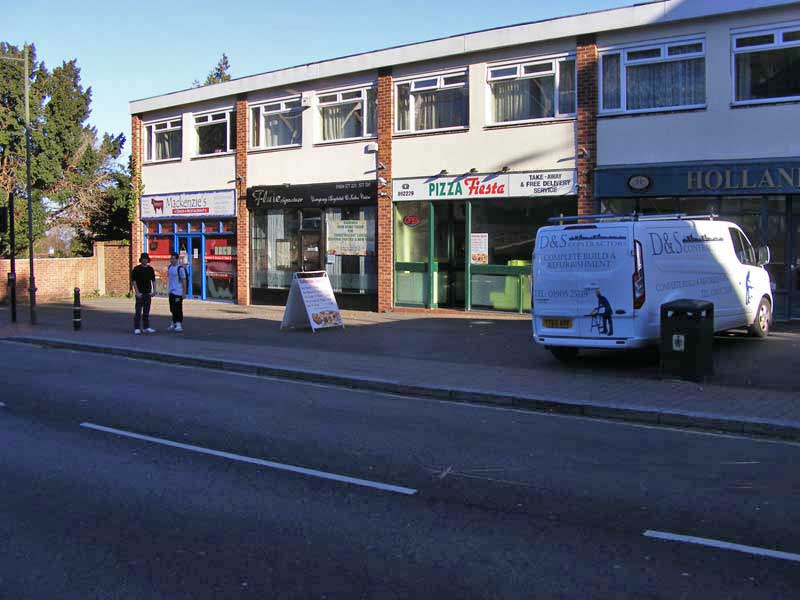
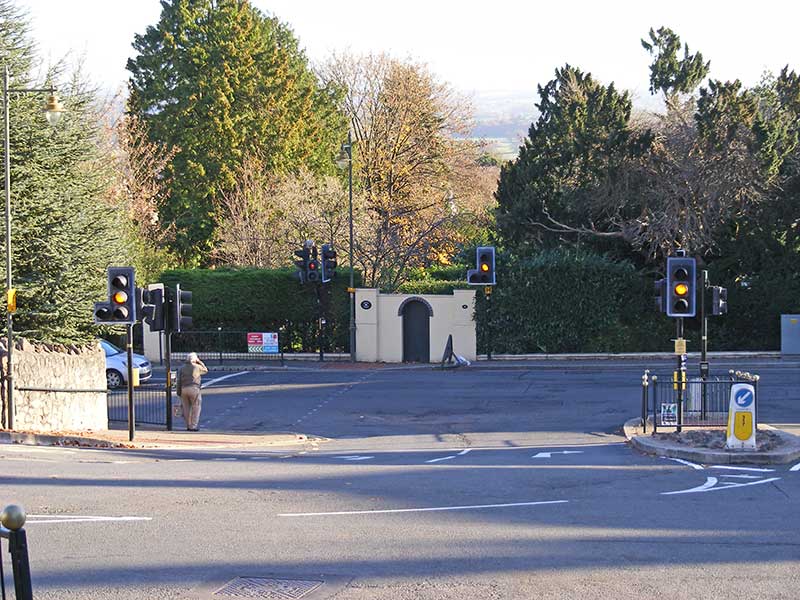
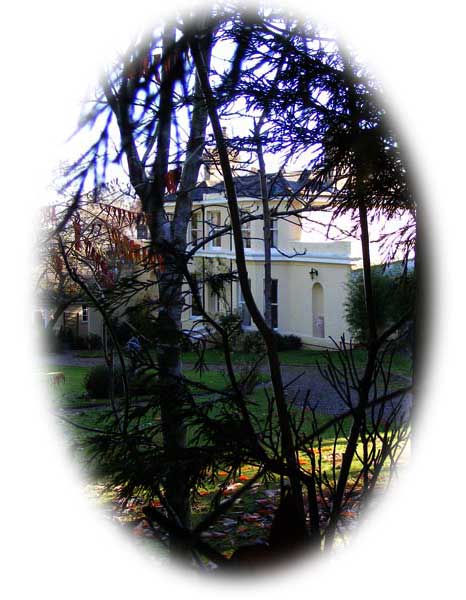 The
view from road is obscured by a wall and hedge, see photo above, but if you
peep through you can just get a glimpse; see photo opposite.
The
view from road is obscured by a wall and hedge, see photo above, but if you
peep through you can just get a glimpse; see photo opposite.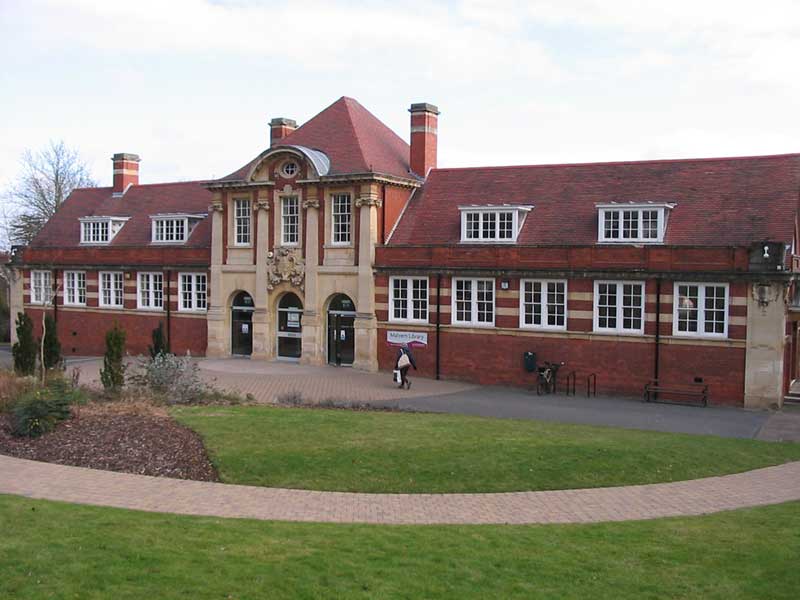
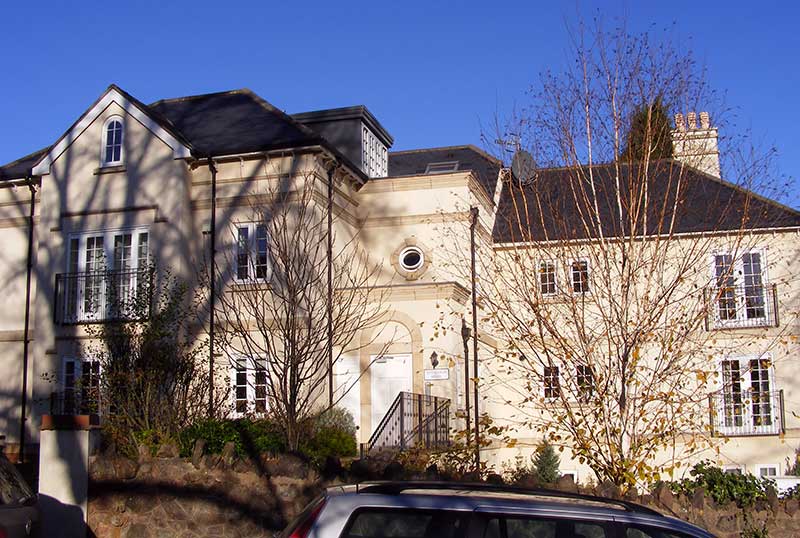
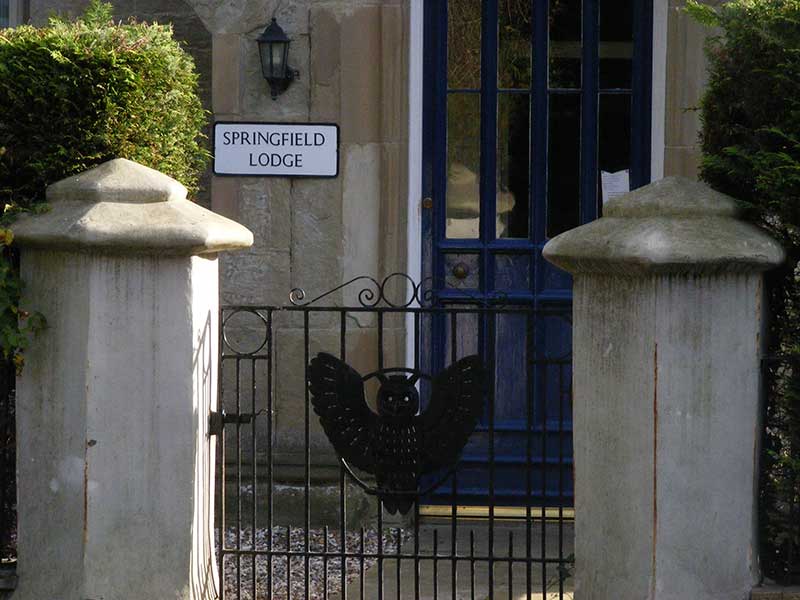
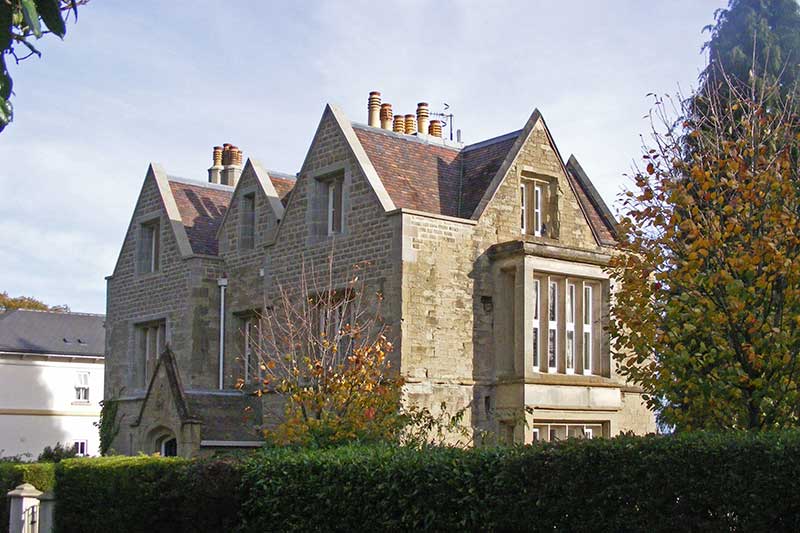
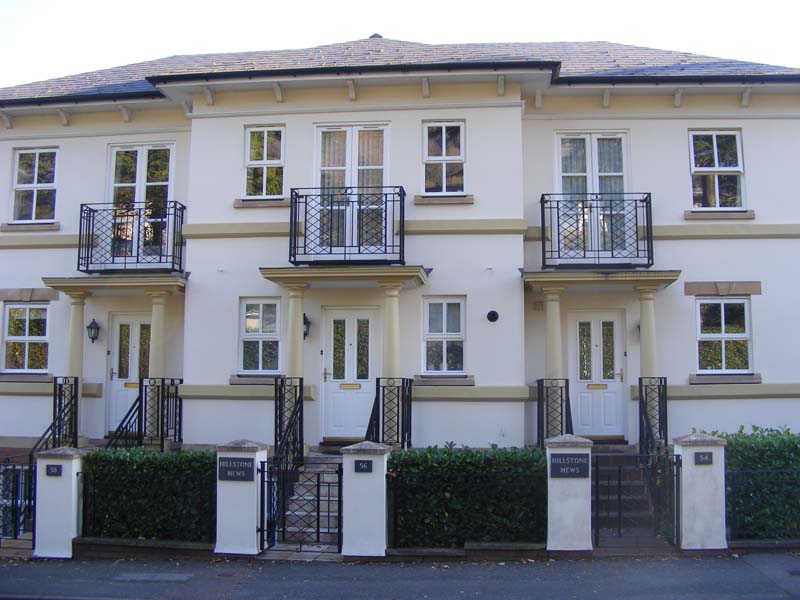
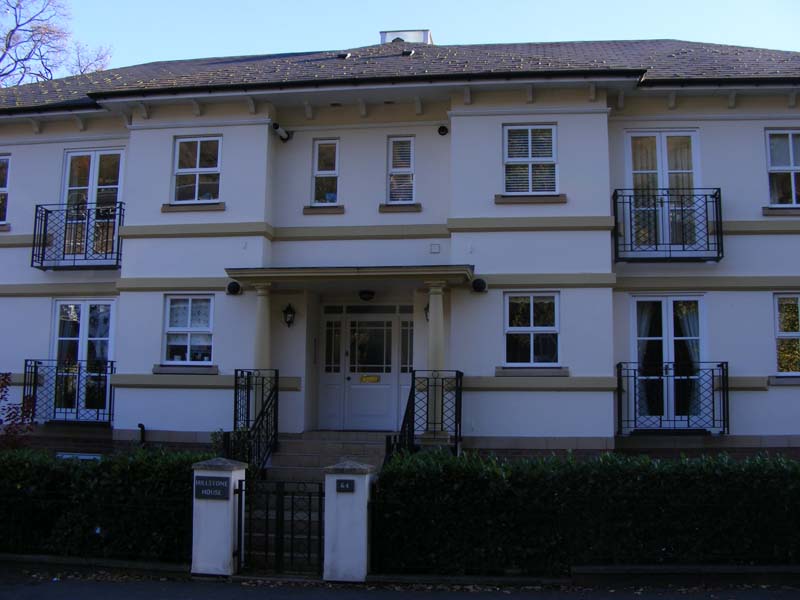
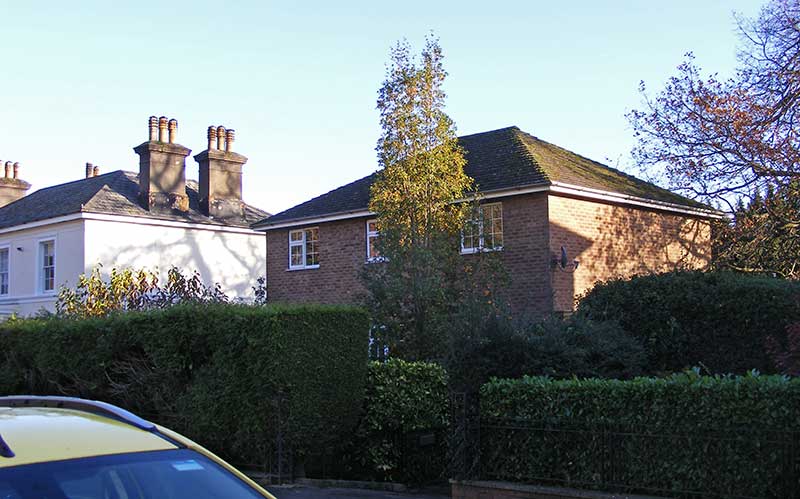
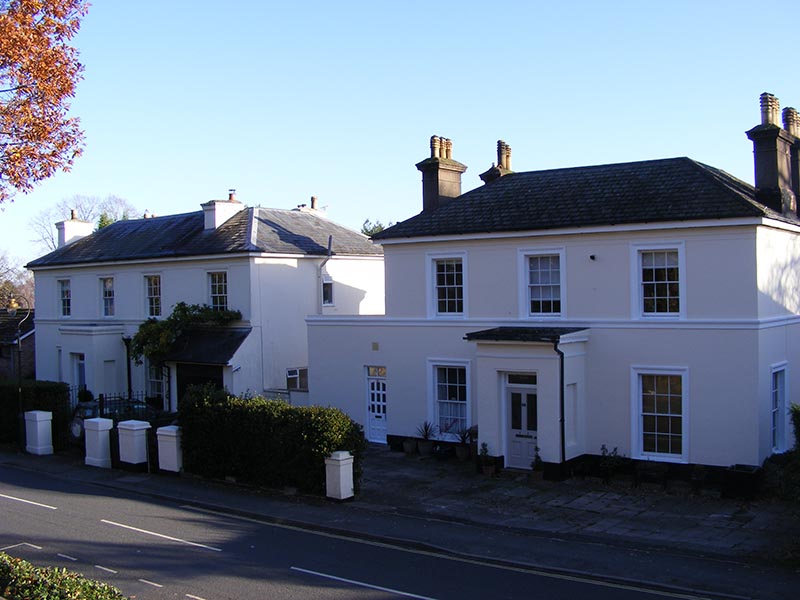
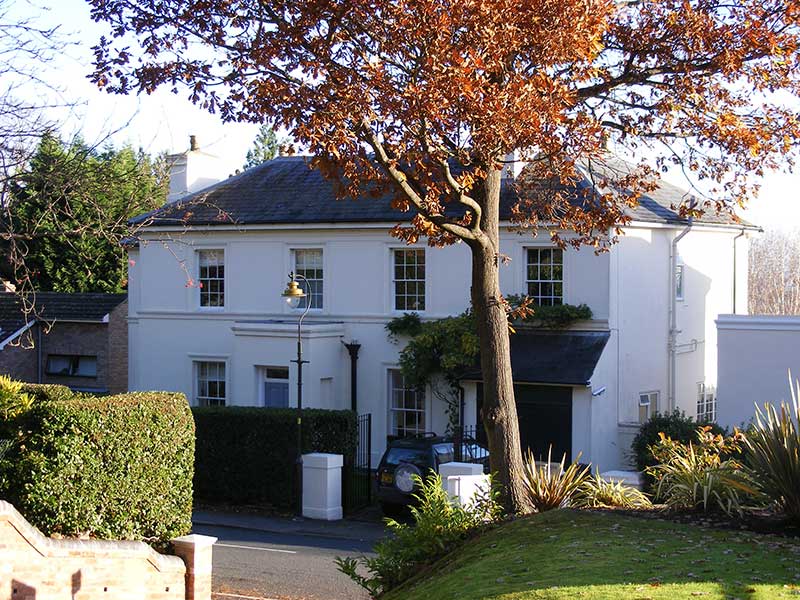
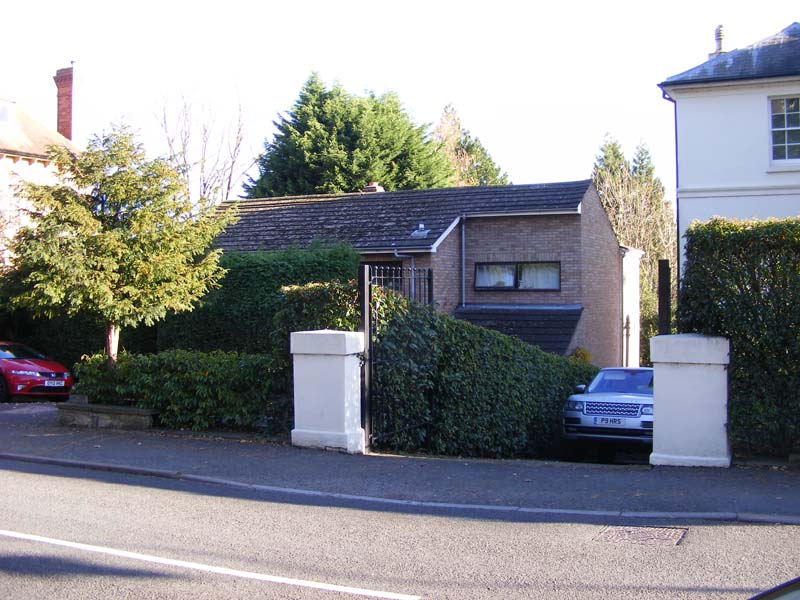
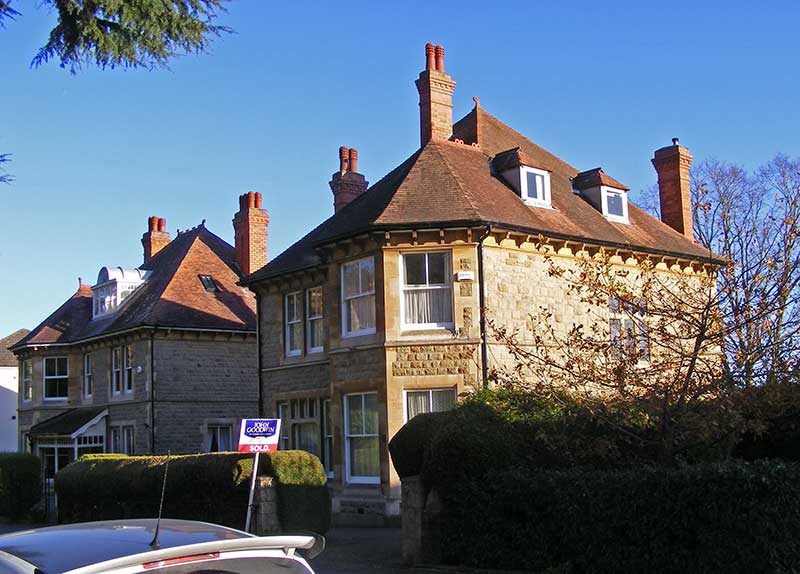
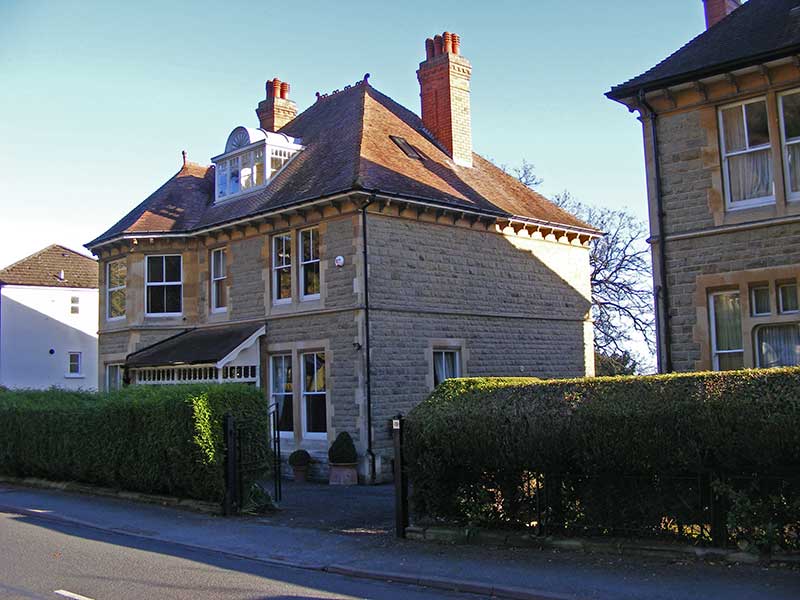
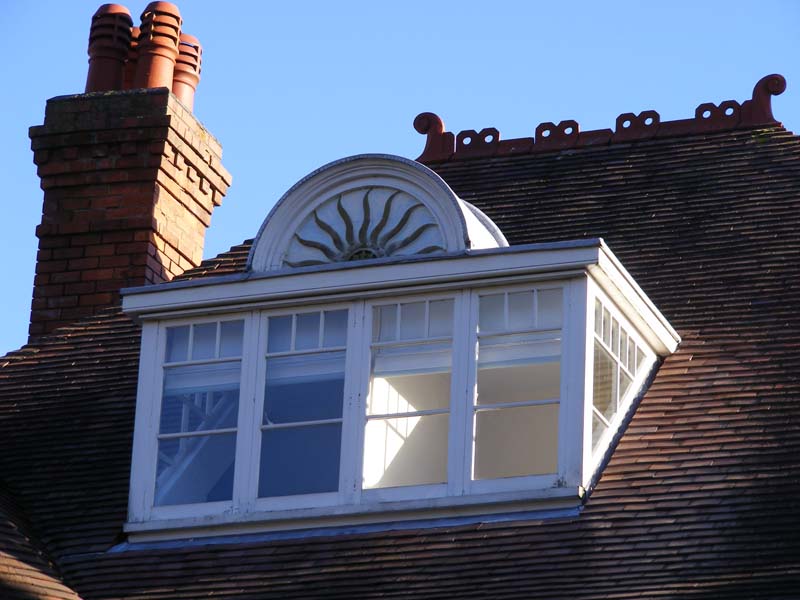
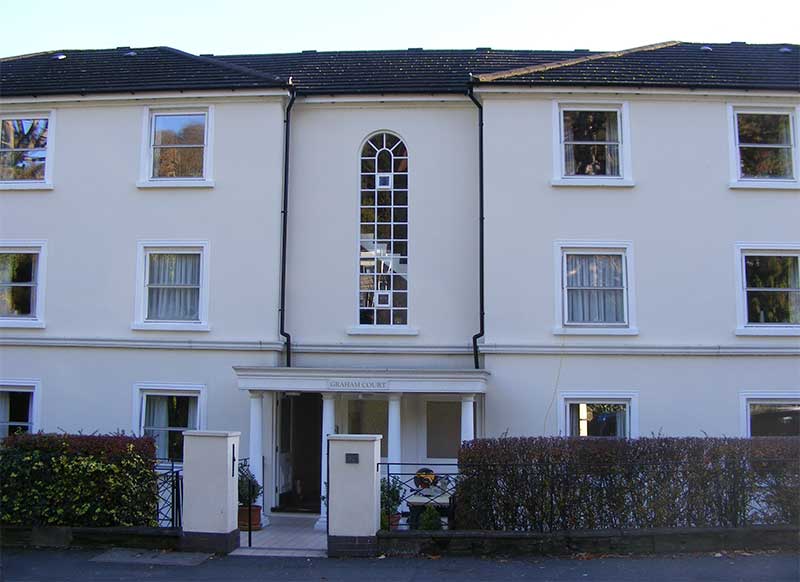
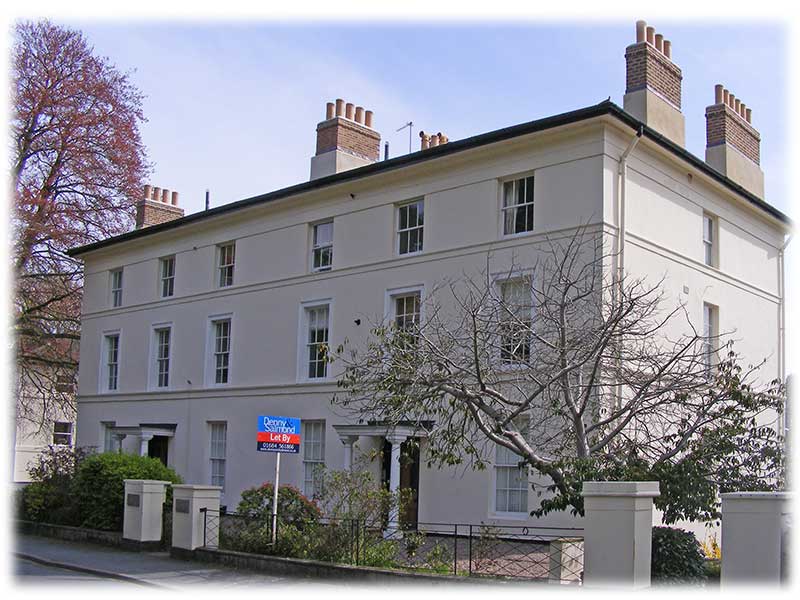
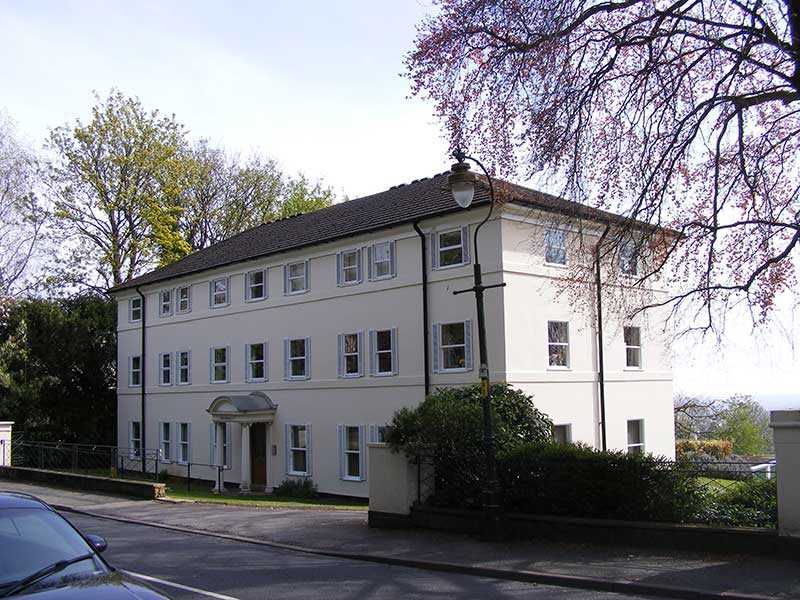
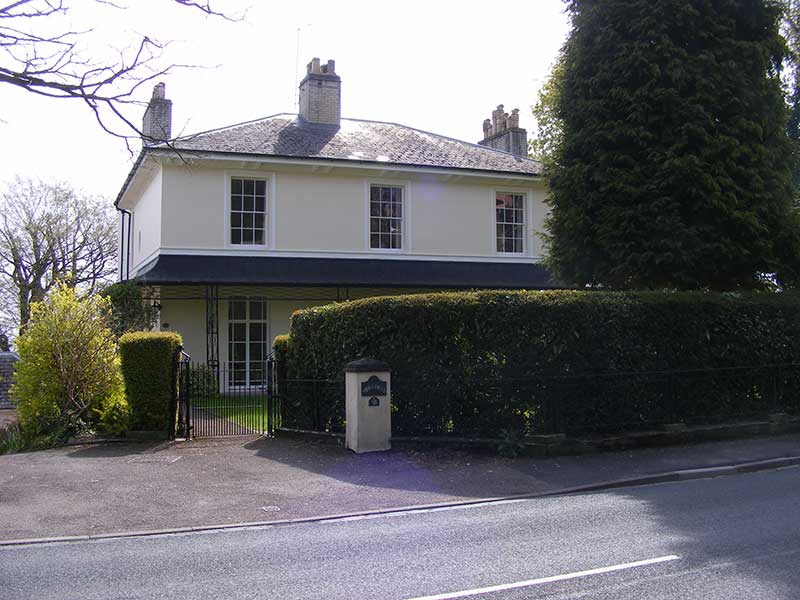
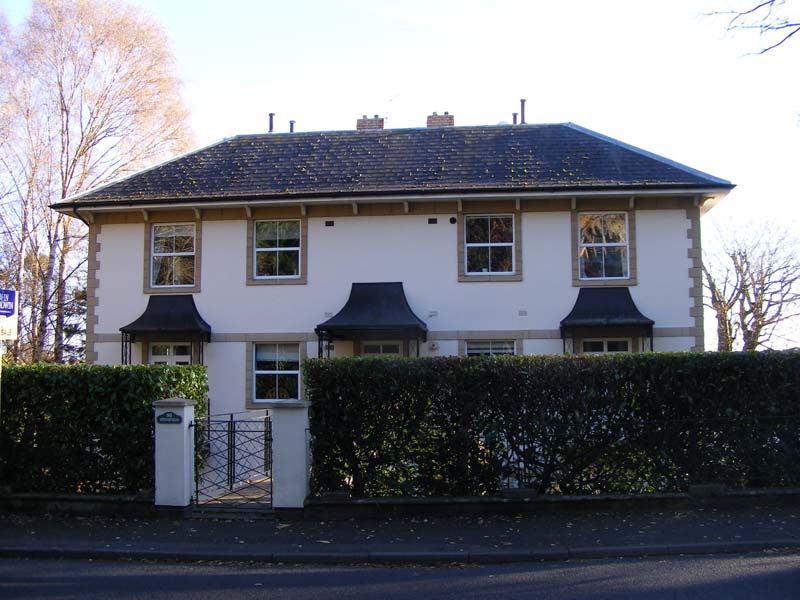
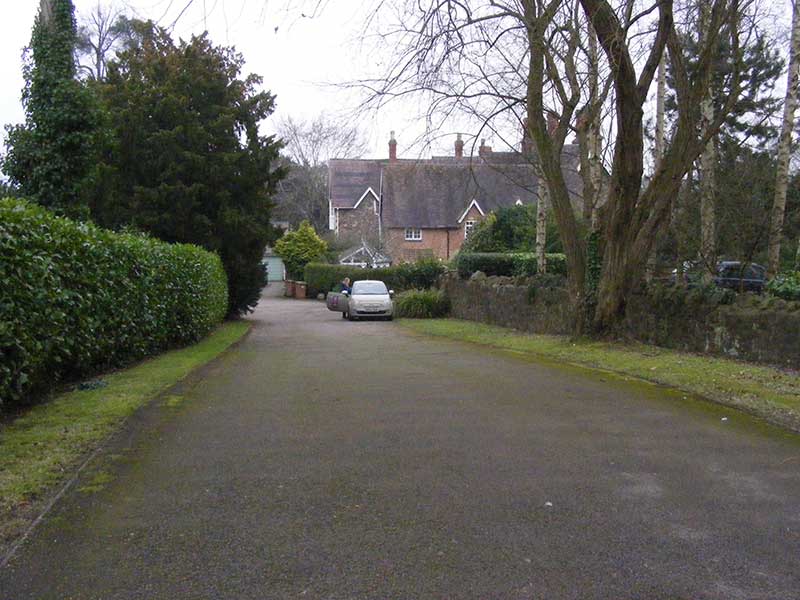
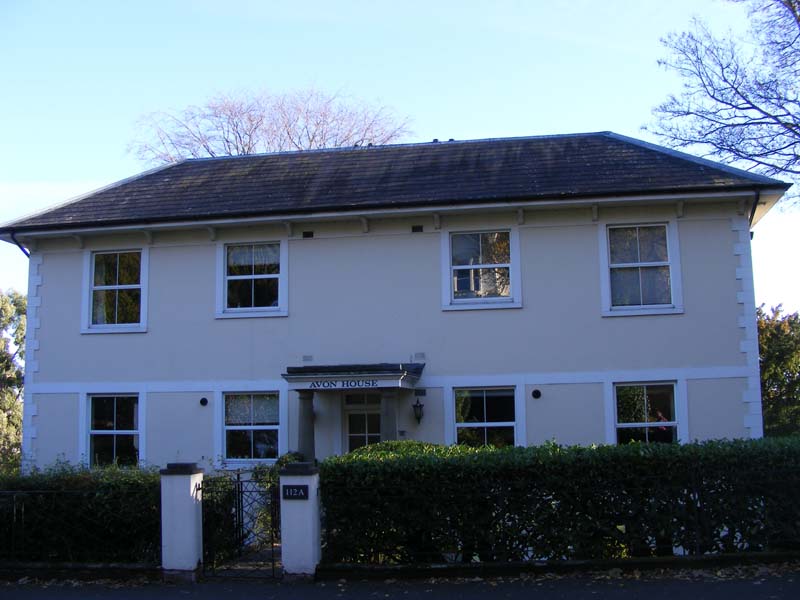
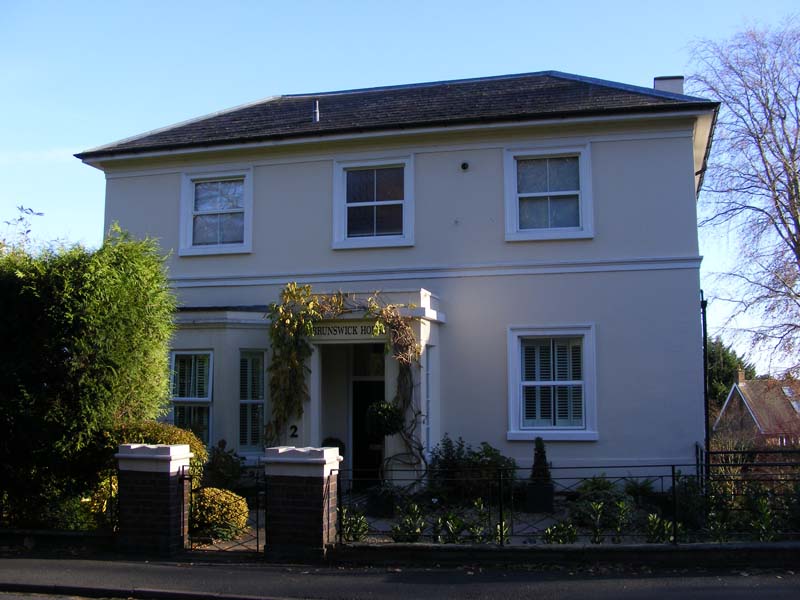
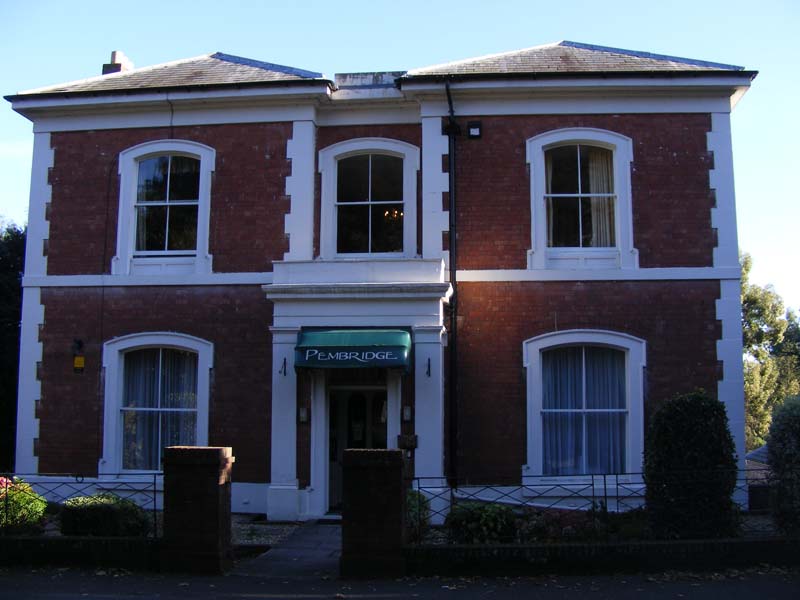
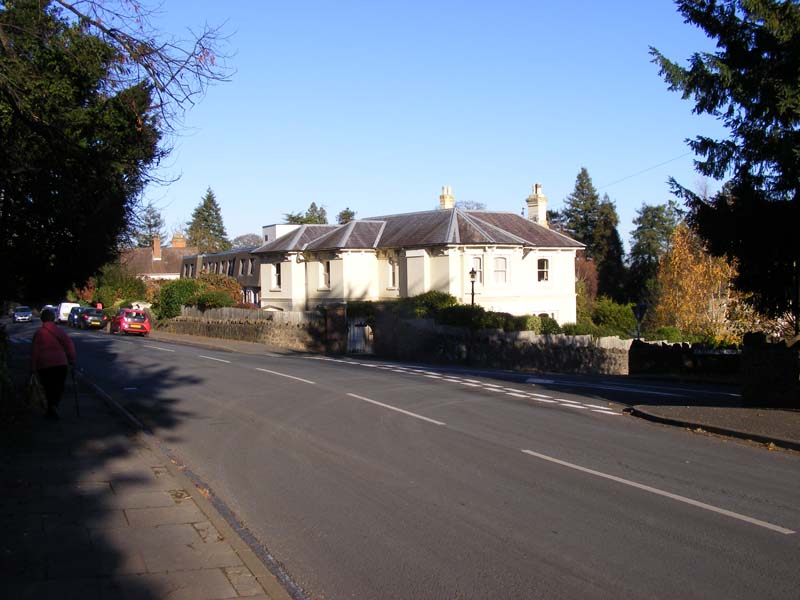
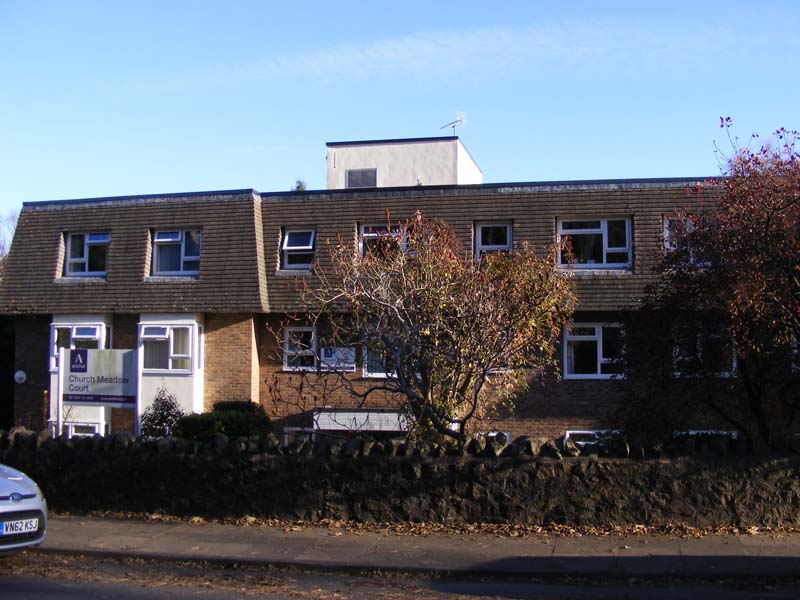
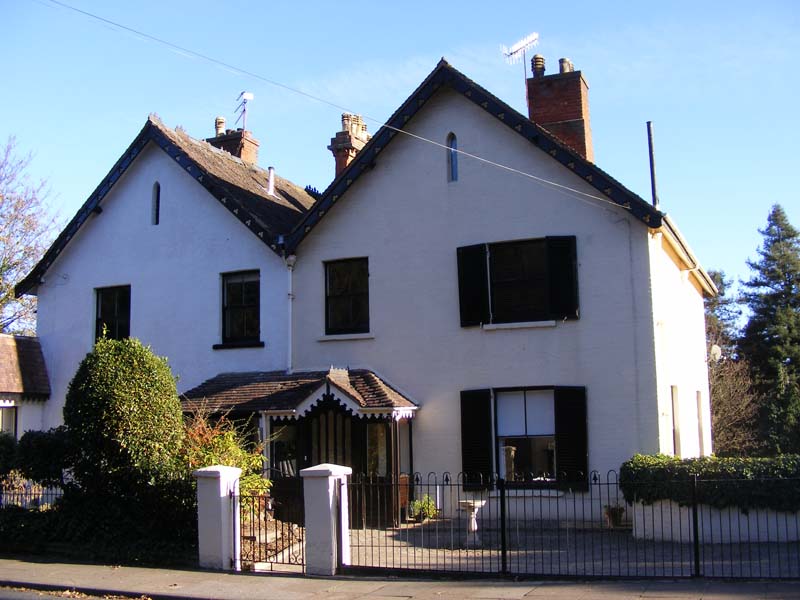
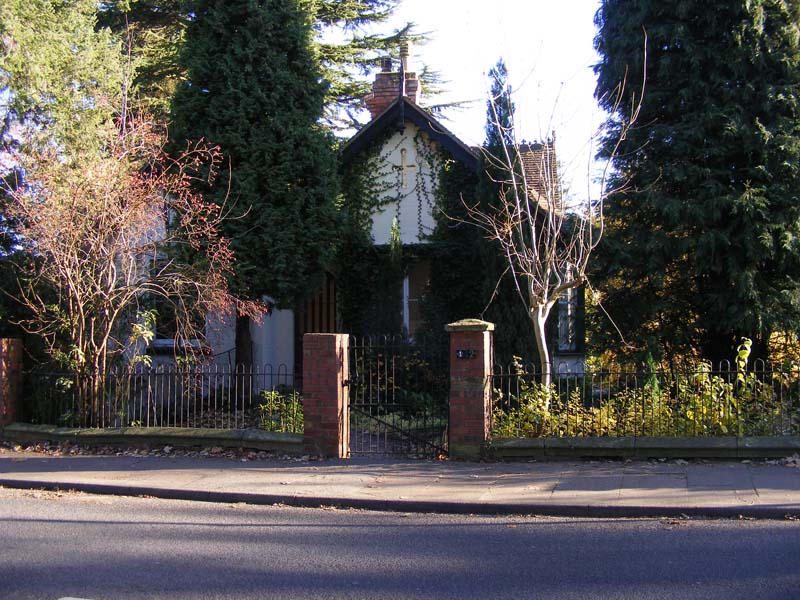
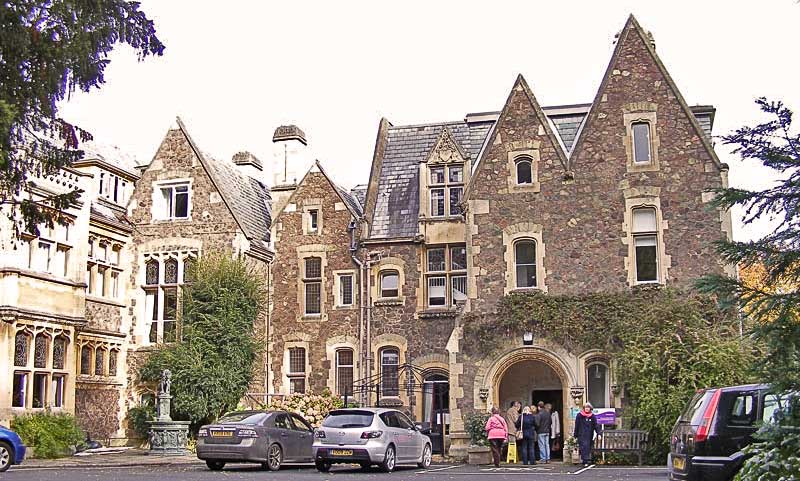
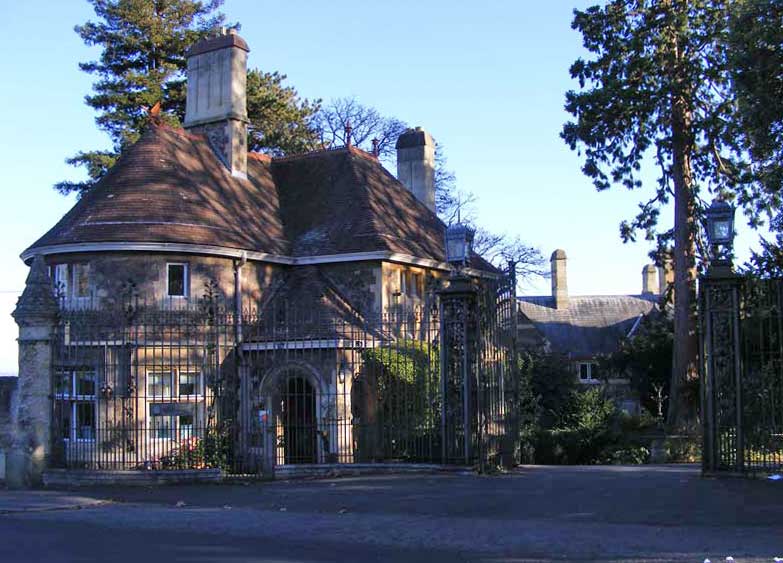
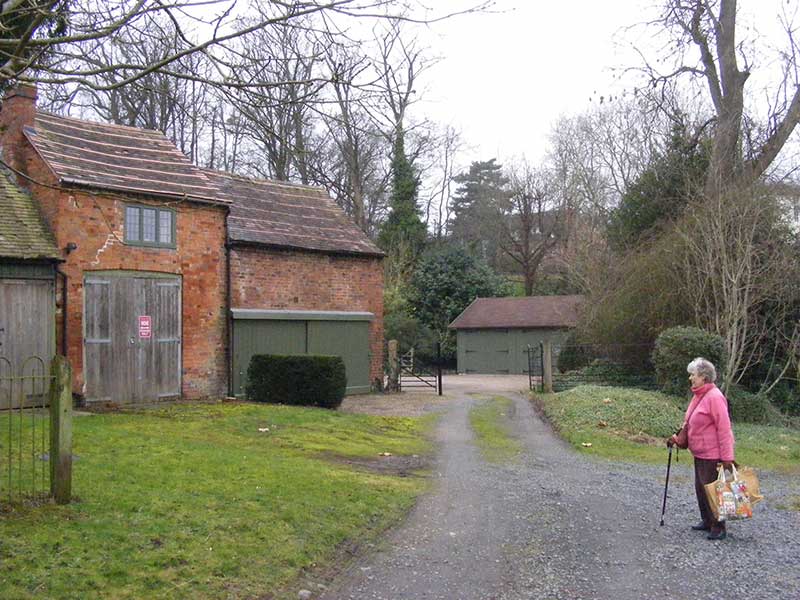
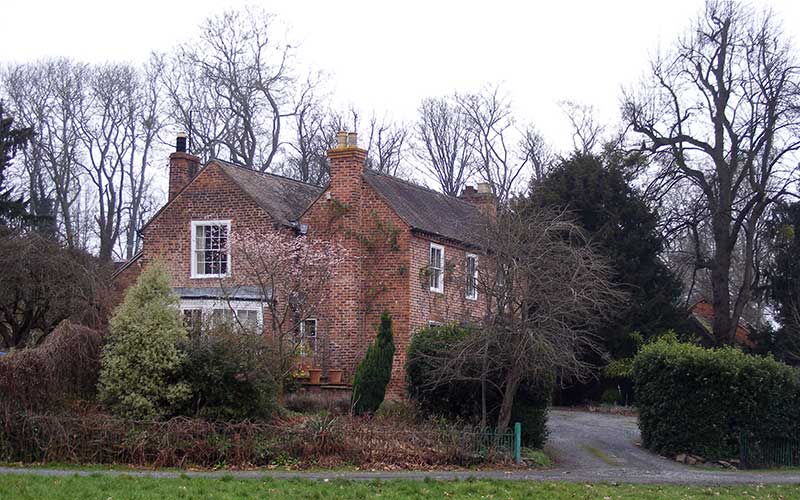
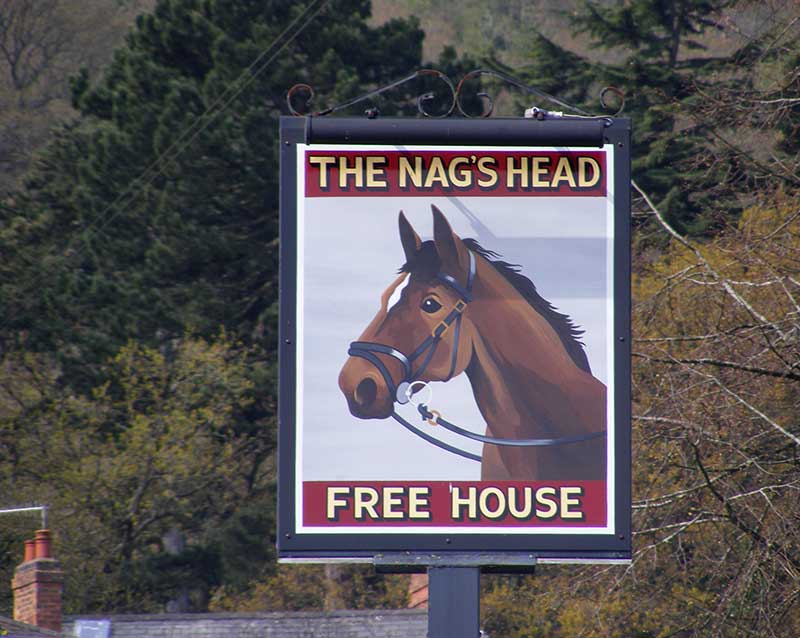 Frederick
John Allsep or Allsopp is recorded having a livery stables next to Graham
Lodge in Stevens 1911 directory and Kelly's 1912 directory. Perhaps it was no
coincidence the adjacent pub was called The Nag's Head.
Frederick
John Allsep or Allsopp is recorded having a livery stables next to Graham
Lodge in Stevens 1911 directory and Kelly's 1912 directory. Perhaps it was no
coincidence the adjacent pub was called The Nag's Head.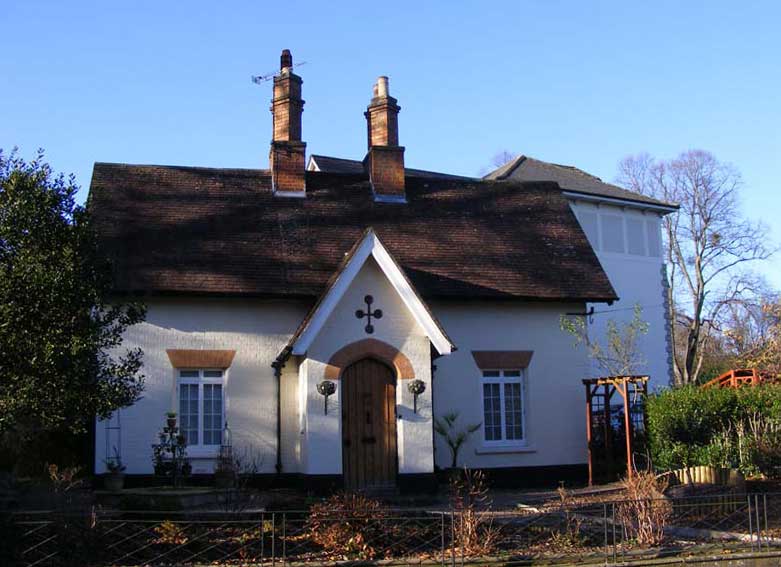
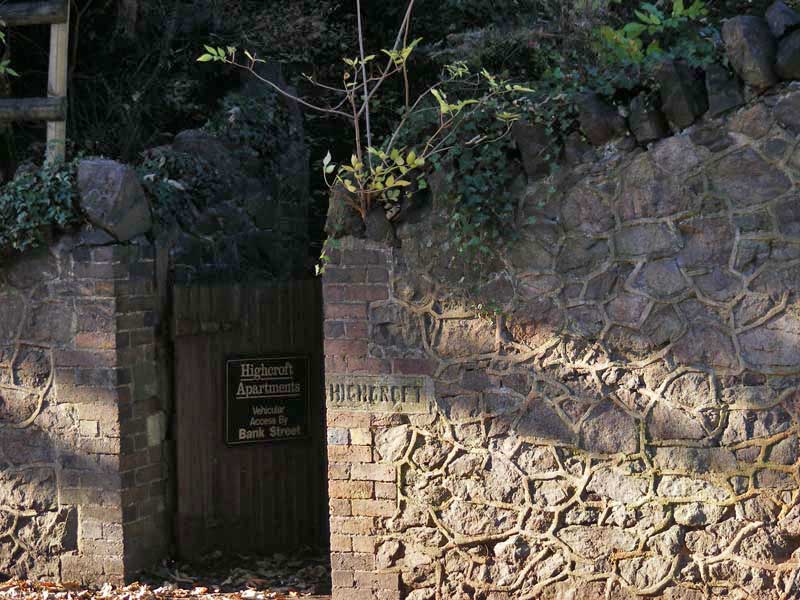
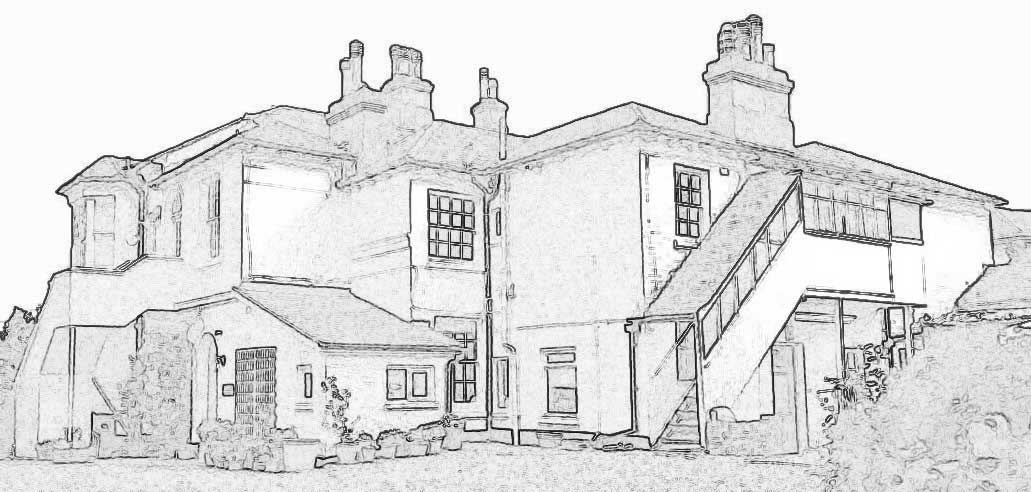
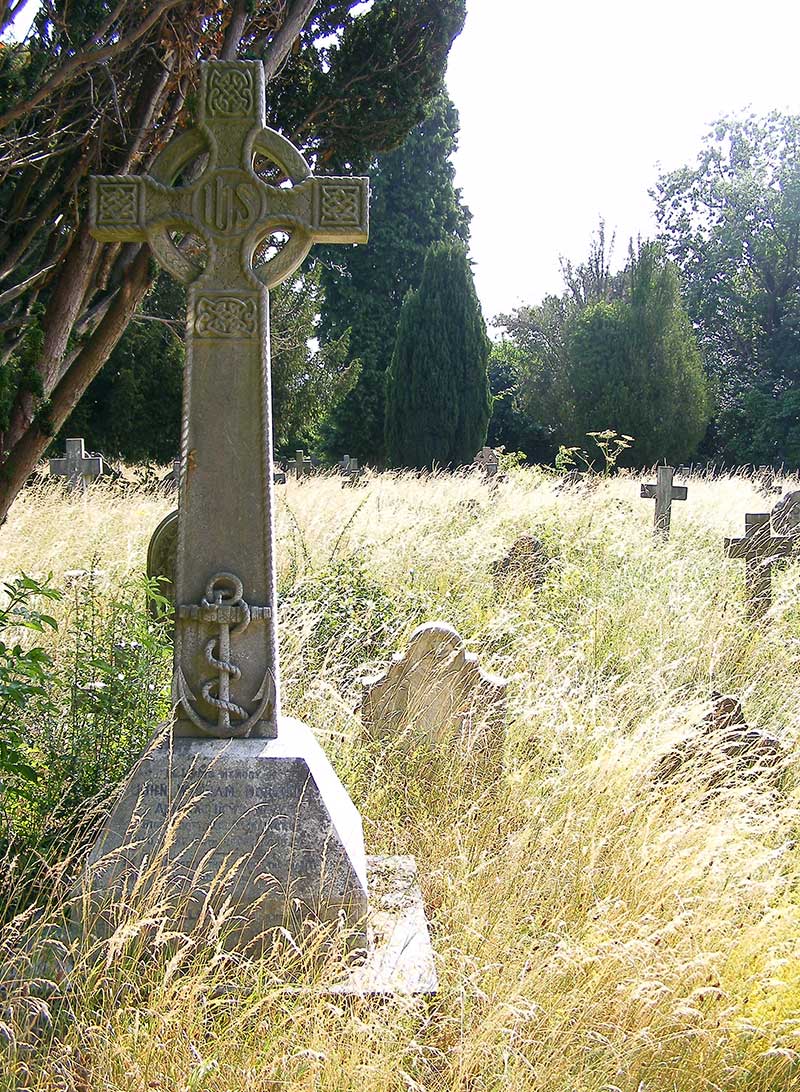 Between
1864 and 1894 Highcroft became the home of
their cousin's son Admiral
John William Dorville (1814 - 1894).
Between
1864 and 1894 Highcroft became the home of
their cousin's son Admiral
John William Dorville (1814 - 1894).